Essaouira is an exceptionally charming town on the Moroccan Atlantic coast. The following map shows its location, as well as all the places I visited during this trip through Morocco (and part of Spain) in 2010:
By this point, I had entered the final, relatively calm phase of this journey, with only a few more coastal towns left to visit before returning to Casablanca, from where I had a return flight to Belgrade (via Rome).
This meant that I would still be visiting interesting and important places, but the overall distance between Essaouira and Casablanca, about 350 km, with a planned overnight stay in Safi (roughly one-third of the way), seemed almost insignificant considering where I had been and for how long I had been travelling over the previous days.
The Medina in Essaouira is on the UNESCO World Heritage List as an outstanding example of a late 18th-century fortified town built according to the principles of the European military architecture of the time, adapted to the context of North Africa. As a major international port that was called Mogador until the 1960s, Essaouira was an important point on trade routes between Morocco and the Sahara on one side, and Europe and the rest of the world on the other.
Here, I chose to book a room in a hotel located right within the medina, so after leaving my things in the room and taking some initial photos from the rooftop terrace of the hotel, I stepped out onto the street and set off for a walk.
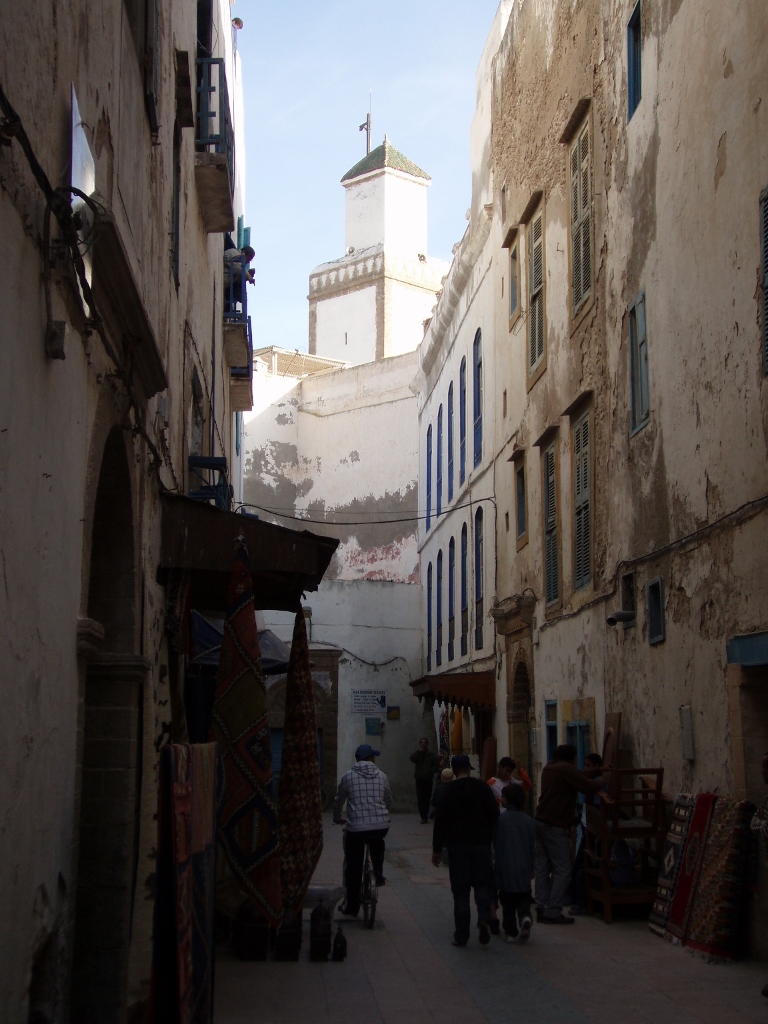 Essaouira, a detail
Essaouira, a detail
As it turned out, Essaouira is quite a touristy place, so even here I saw Western female tourists sitting peacefully in the outdoor seating areas of café-restaurants. Somehow, my first impressions of Essaouira were so positive that I even considered staying an extra day just to do nothing but sit in restaurants and cafés, and maybe take a few walks around the town. In the end, I didn’t do that, but only because I had enough time to both explore, relax, and enjoy the restaurants and cafés while still sticking to my original plan. After all, the medina in Essaouira, as the most interesting part, is not large and can be seen quite easily and quickly.
On the other hand, I was genuinely thrilled to have come here. I’m not exactly sure what it was that attracted me so much to this place, but I was fully aware that I was elated and that I liked everything about it.
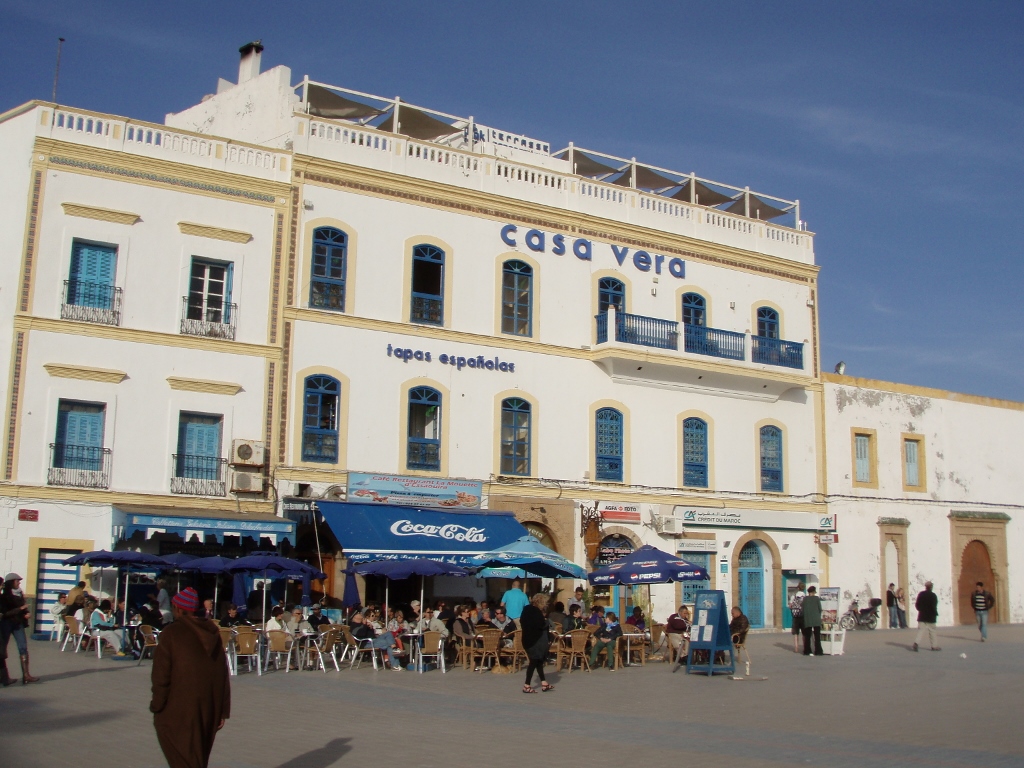 Essaouira, a detail
Essaouira, a detail
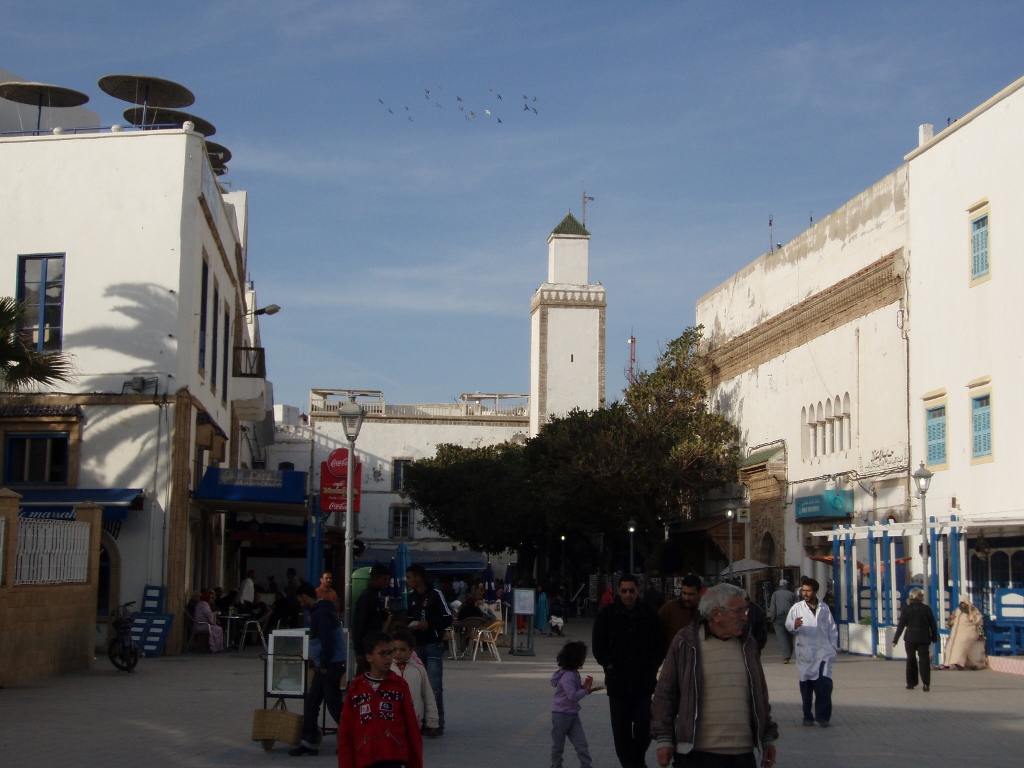 Essaouira, a detail
Essaouira, a detail
Along the way, I passed by a stand selling freshly squeezed orange juice and that’s definitely something not to be missed.
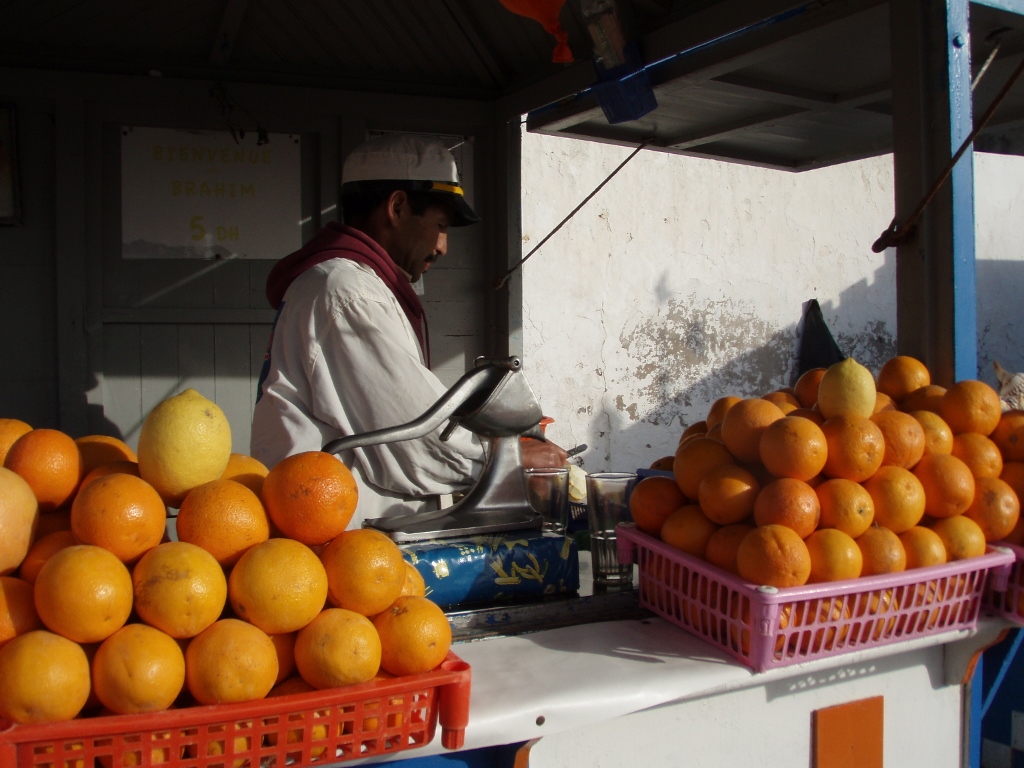 Essaouira, a detail
Essaouira, a detail
This was only my first and superficial introduction to Essaouira, but I found it very enjoyable. I soon left the medina area and began walking along the very edge of the Atlantic Ocean.
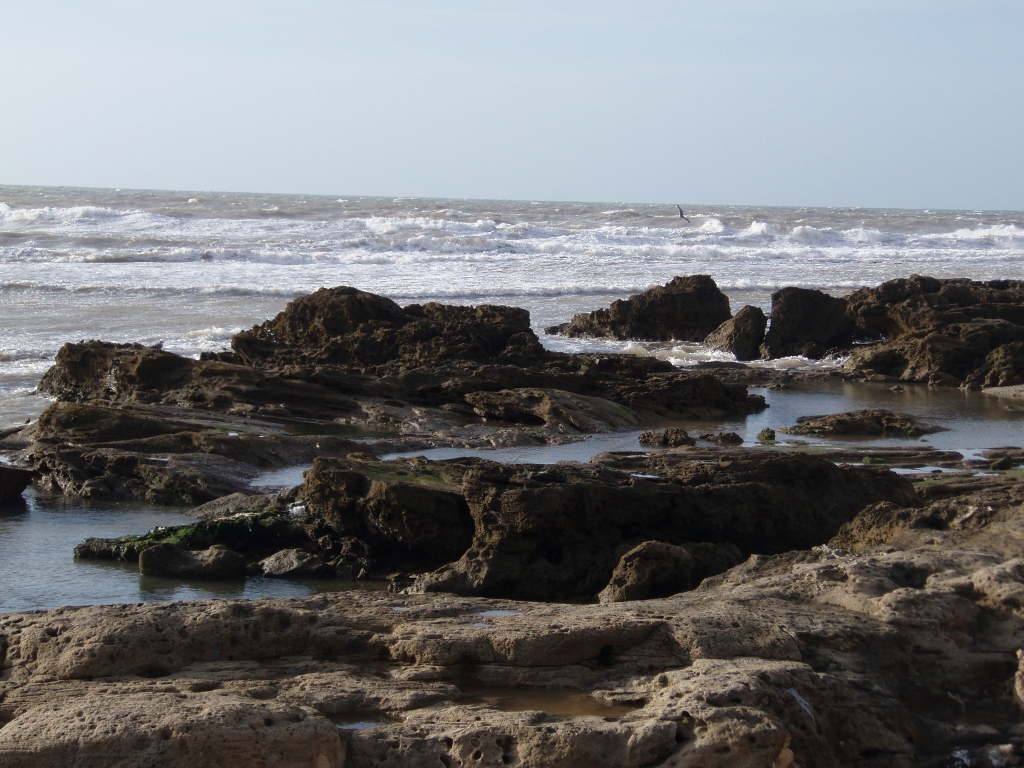 Essaouira, a detail
Essaouira, a detail
I could also see from here the walls that surround the Medina in Essaouira.
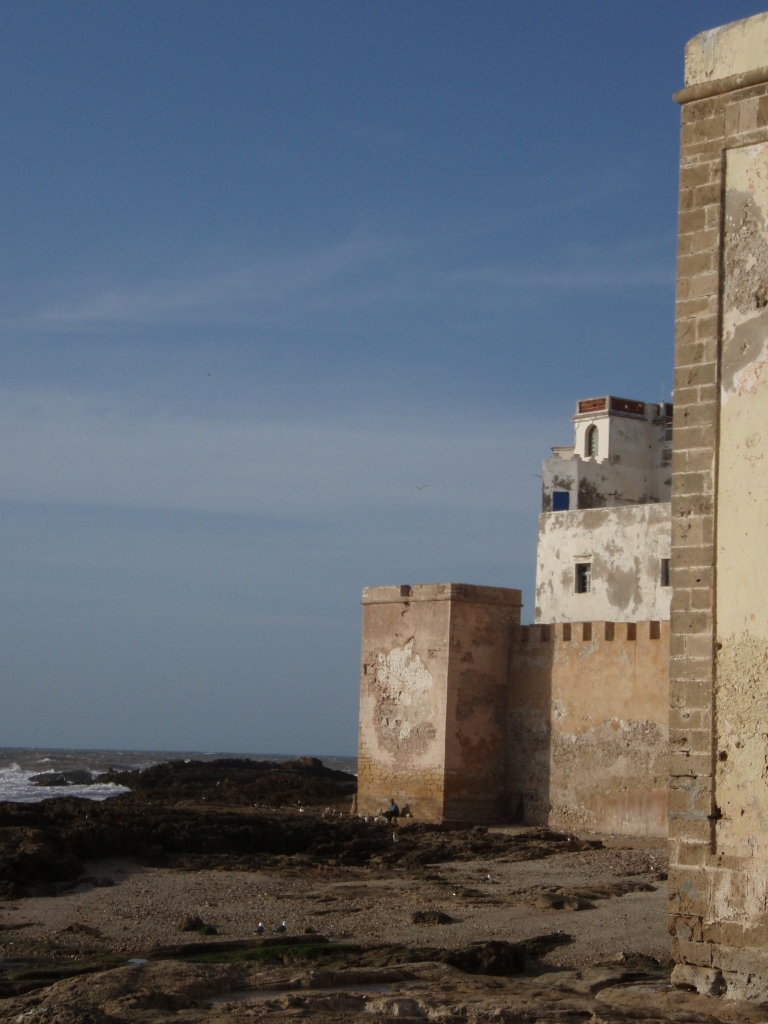 Essaouira, a detail
Essaouira, a detail
I don’t know what could be found here on the rocky shore, but it was clear that both people and seagulls were interested.
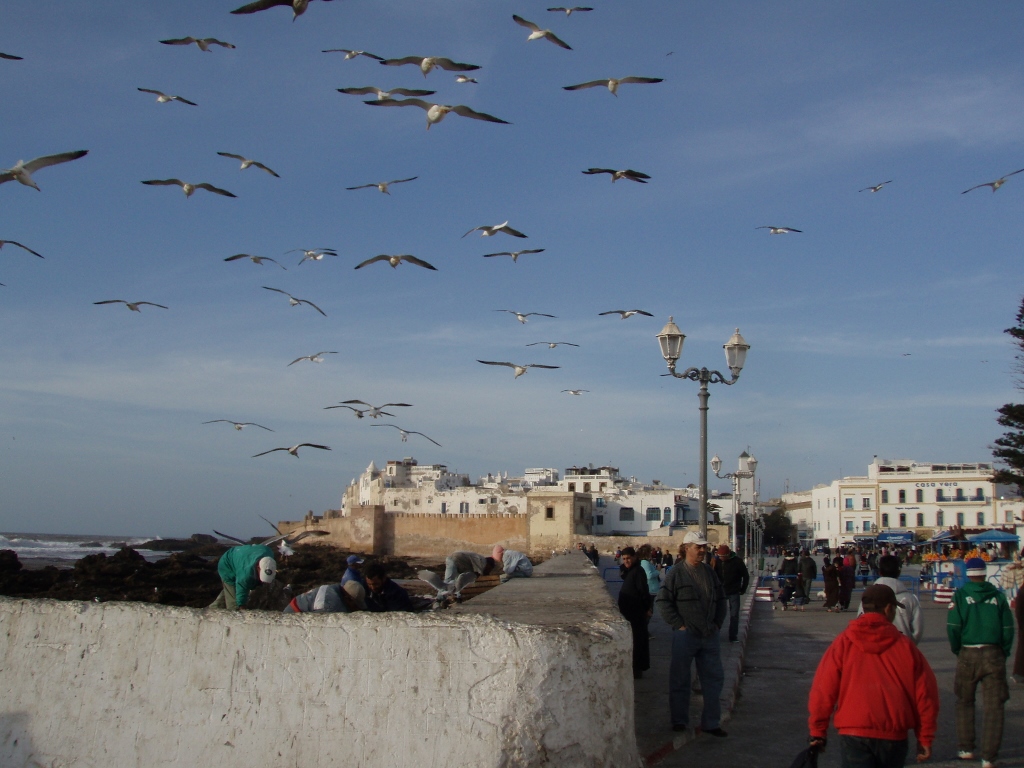 Essaouira, a detail
Essaouira, a detail
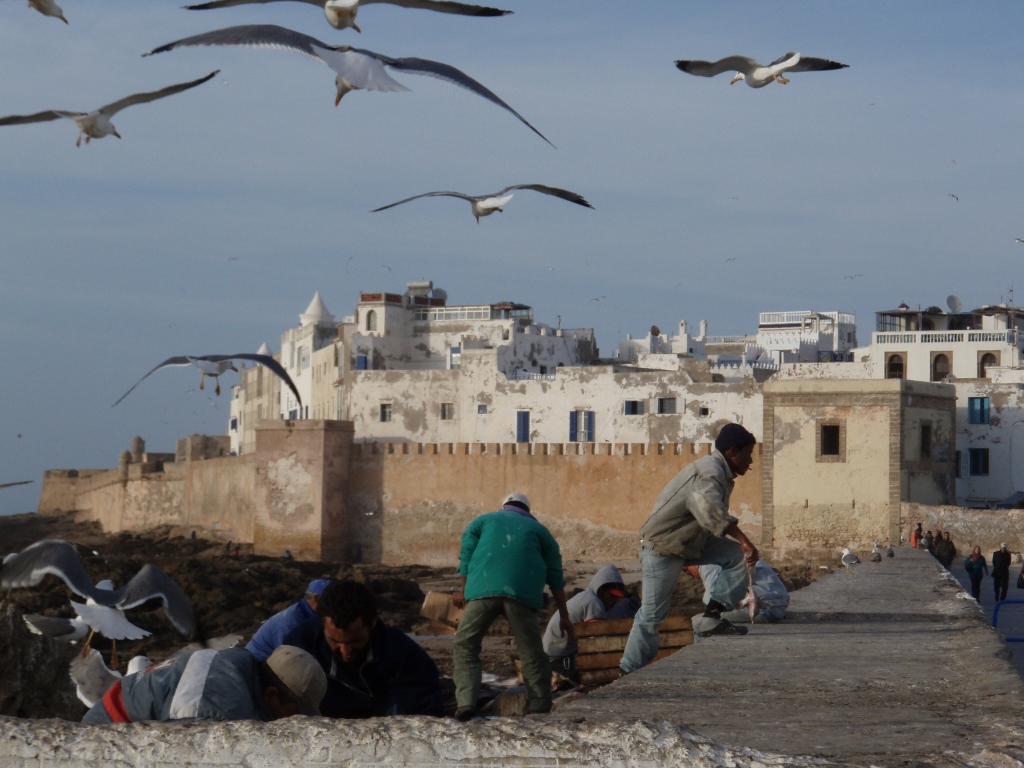 Essaouira, a detail
Essaouira, a detail
Although the waves and the strong wind might suggest otherwise, the port in Essaouira is actually a fairly calm haven for ships and fishing boats, as it is partially protected by Mogador Island, but that’s not what can be seen in the next photo (to the right). This is the Small Island.
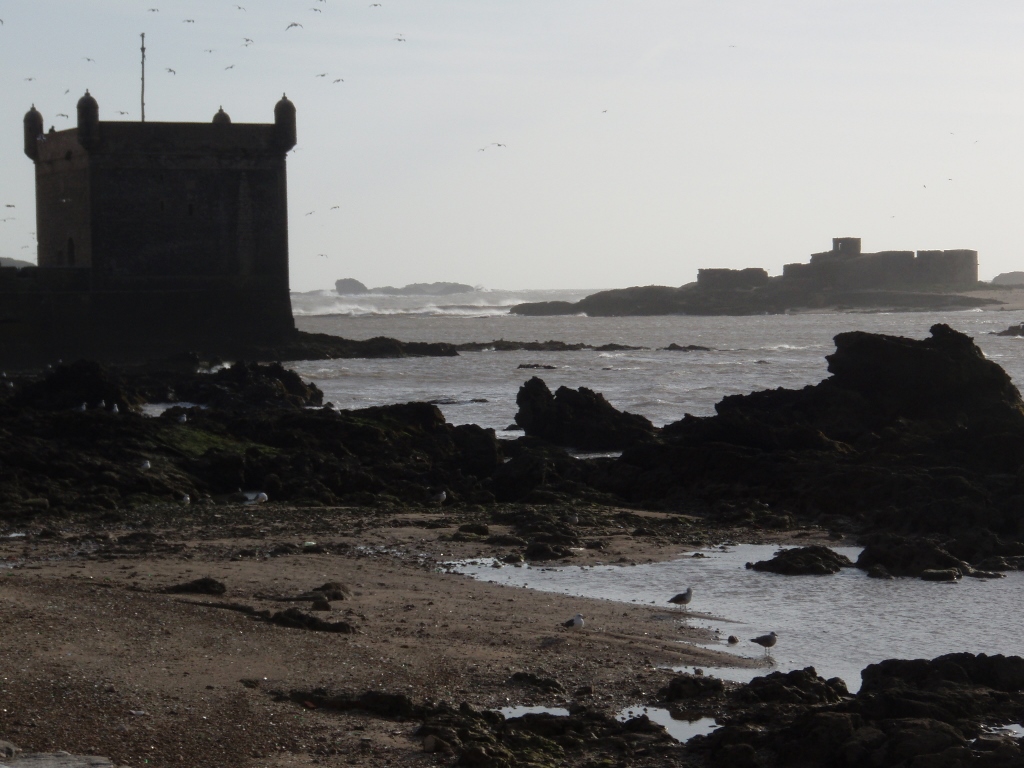 Essaouira, a detail
Essaouira, a detail
Near the port, there is also a sqala, which is the name for a bastion that defends the medina. This one is called the Sqala of the Port, while there is another one called the Sqala of the Kasbah.
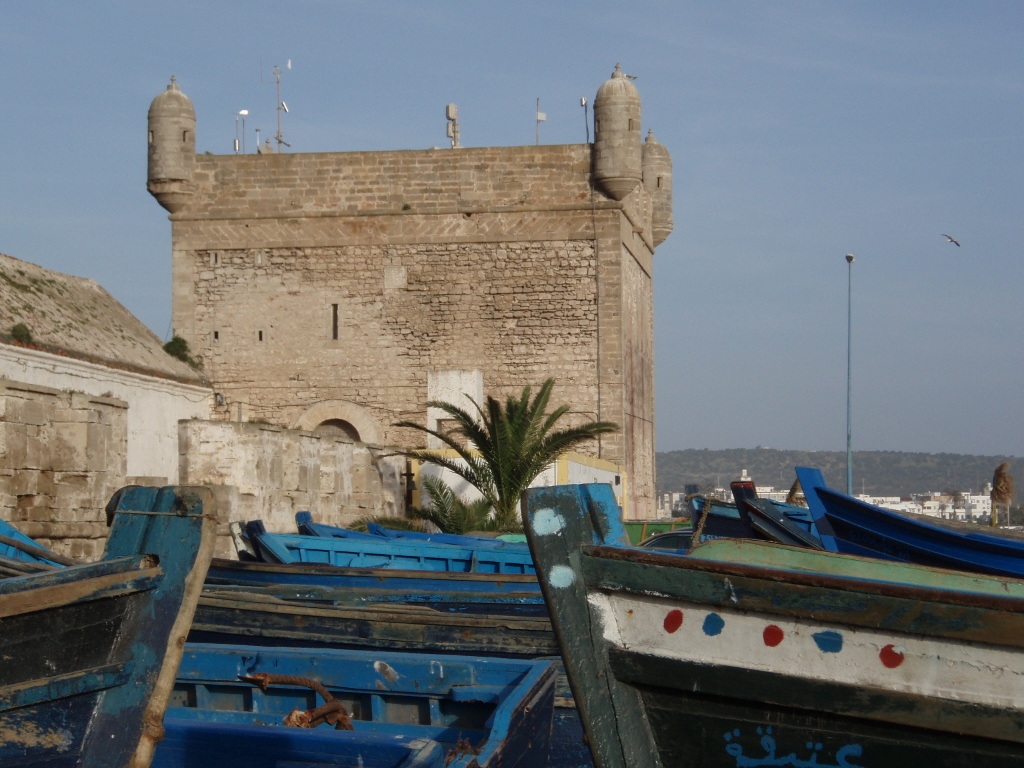 Essaouira, a detail
Essaouira, a detail
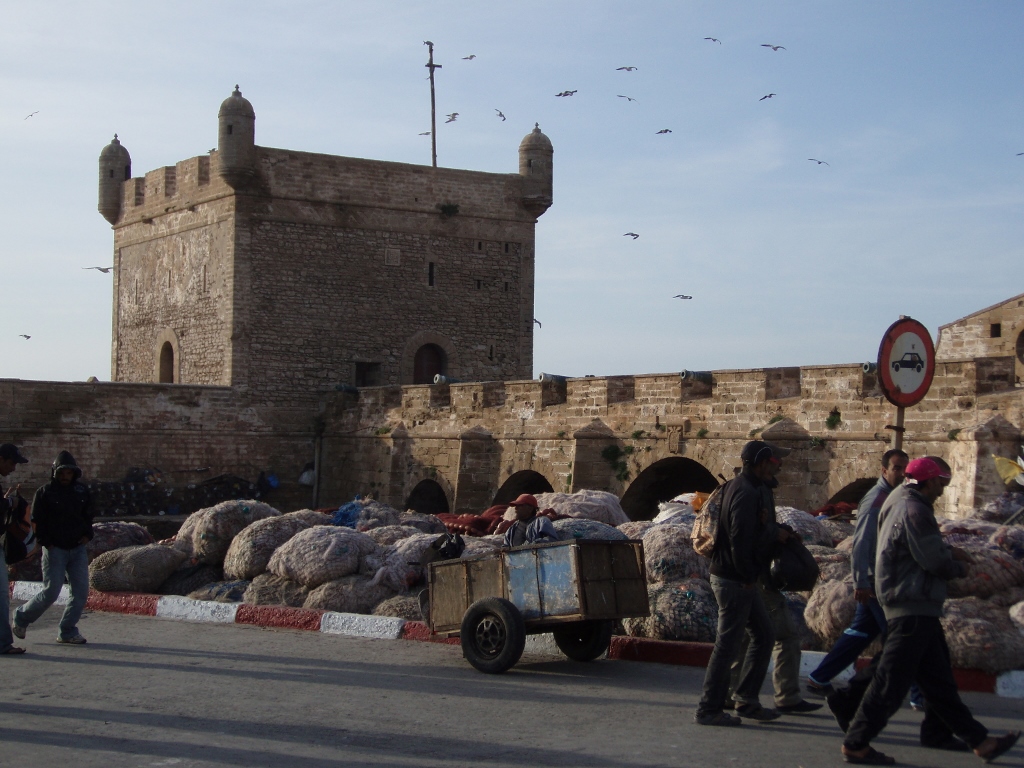 Essaouira, a detail
Essaouira, a detail
Part of the walls that separate the medina from the port is the gate Bab el-Marsa.
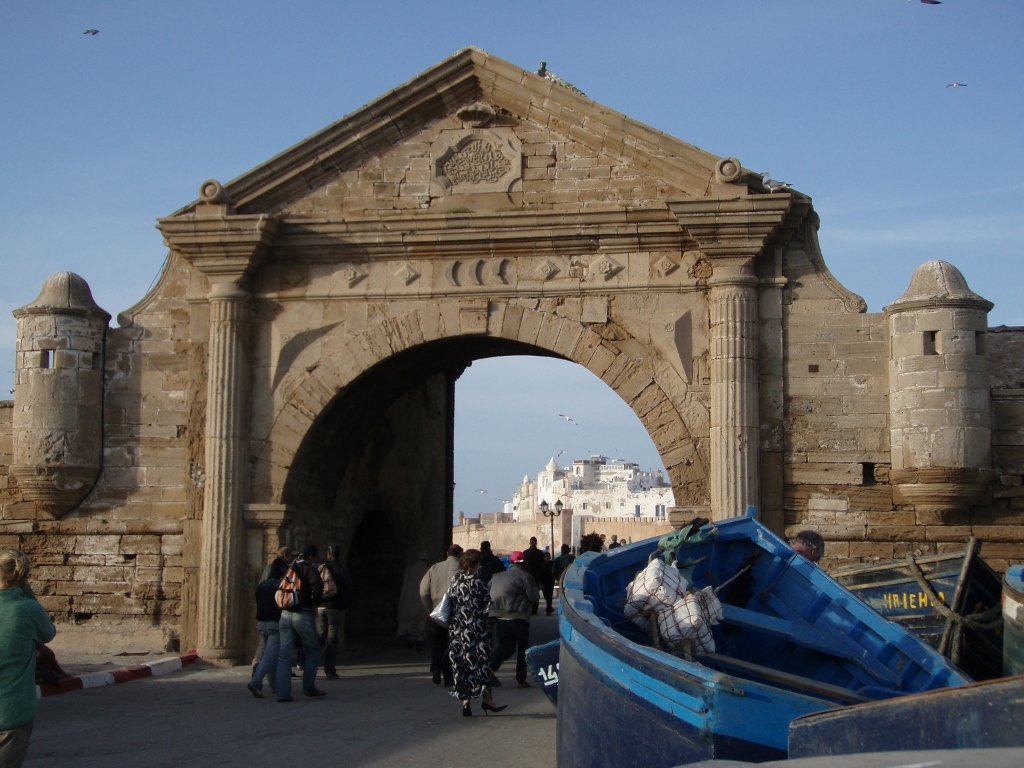 Essaouira, a detail
Essaouira, a detail
As it was in the past, today Essaouira is still one of the most important fishing ports in Morocco, although one might doubt that upon seeing some fishing boats that appear to be piled up haphazardly. Of course, these are boats that have been pulled ashore. Across from this spot is the port where the fishing boats and ships are neatly and properly docked, but I didn’t take any photos of them.
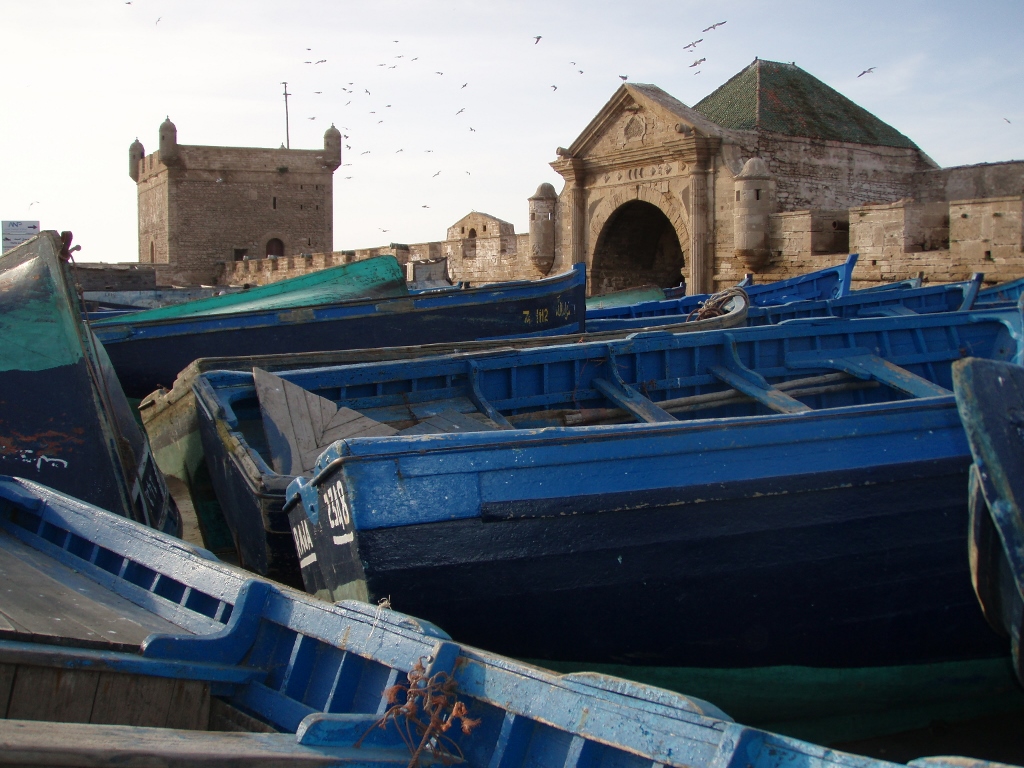 Essaouira, a detail
Essaouira, a detail
South of the port stretches a large beach named after the town itself – Essaouira Beach.
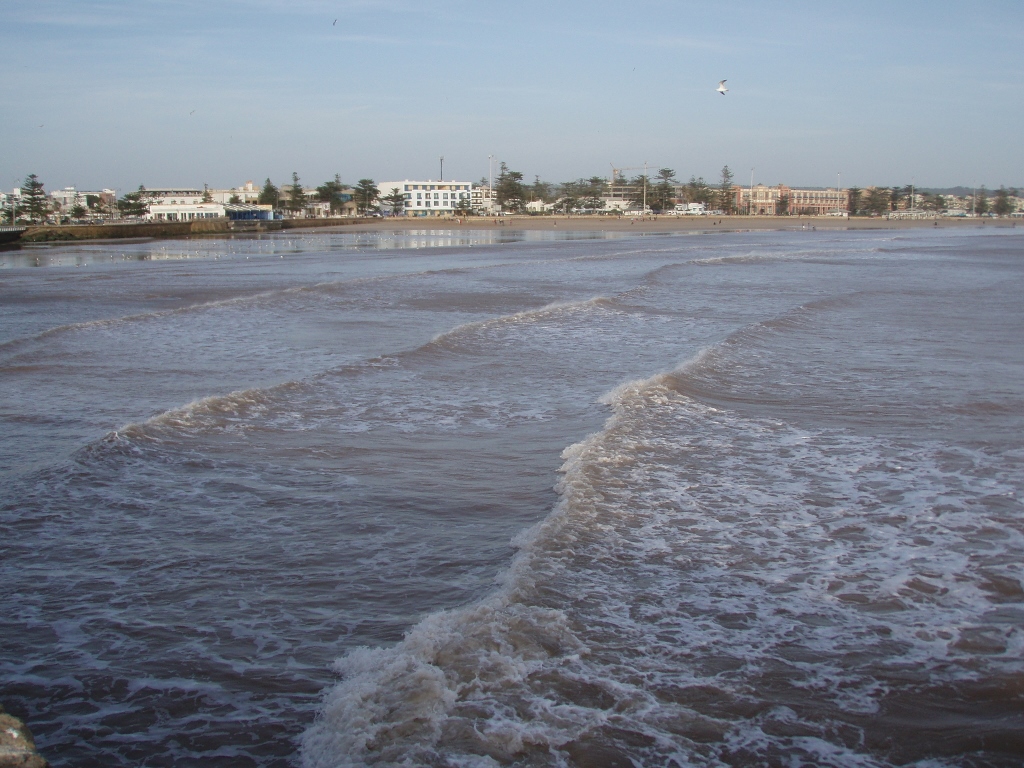 Essaouira, a detail
Essaouira, a detail
At the time of my visit (late March 2010), it was too cold for anyone to even consider swimming here, but there were still some people, and even more seagulls, taking advantage of the pleasant aspects of this large beach.
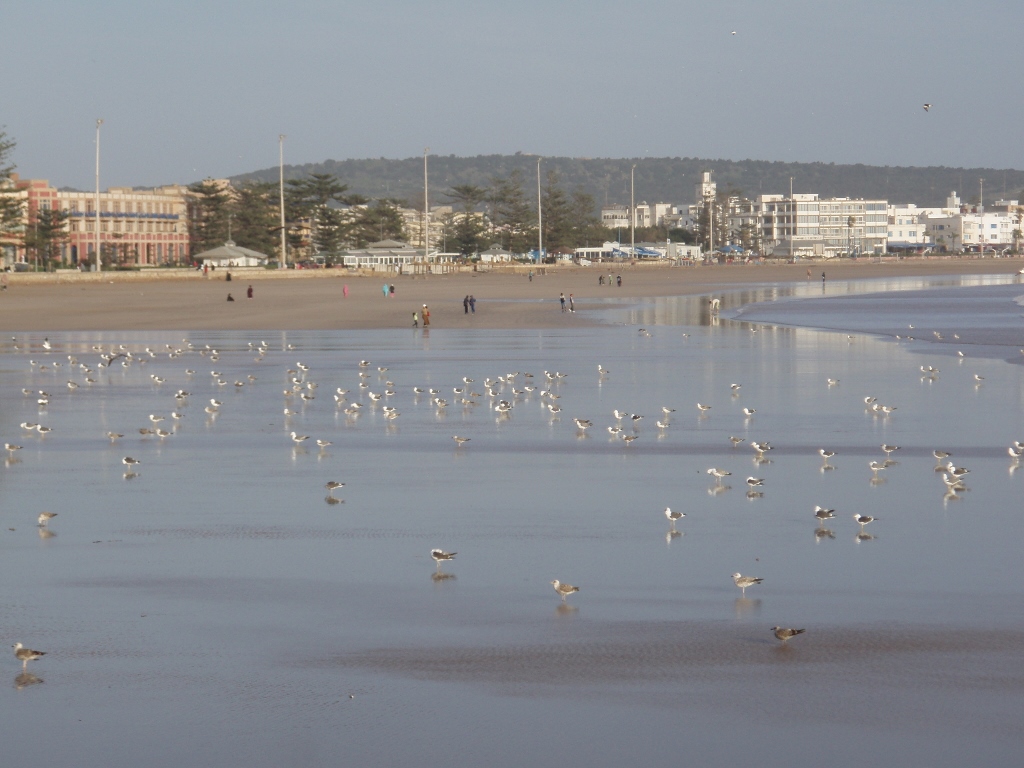 Essaouira, a detail
Essaouira, a detail
Now I started heading back toward the Medina in Essaouira and at one spot the walls surrounding it could be clearly seen.
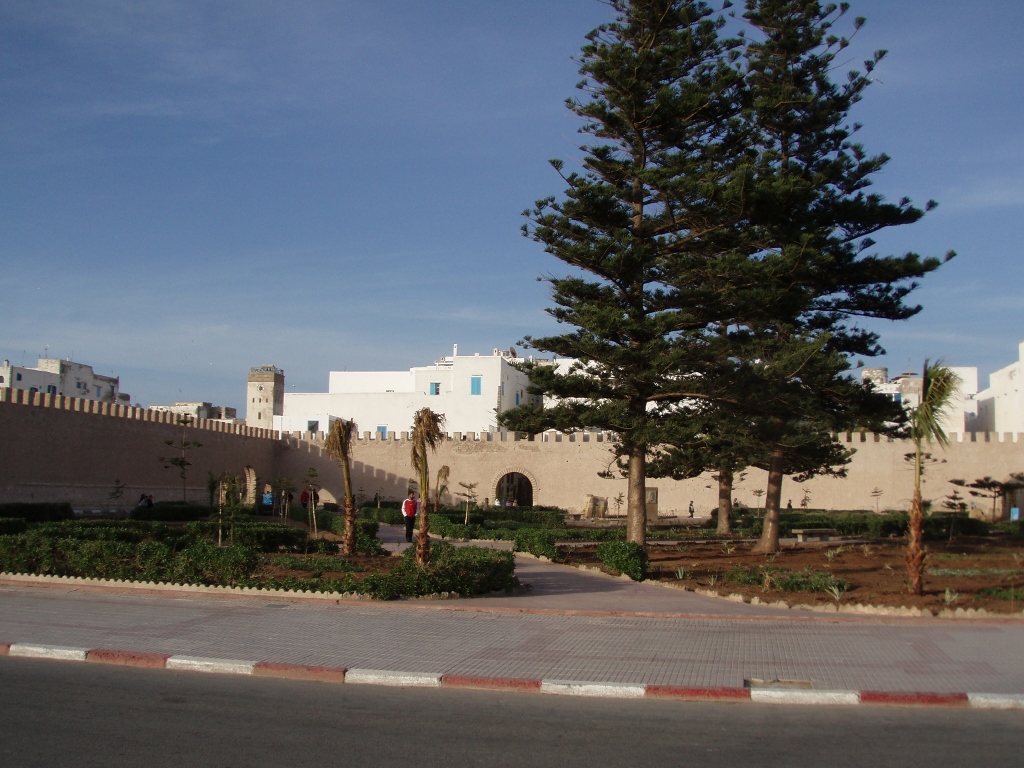 Essaouira, a detail
Essaouira, a detail
What’s interesting about the park shown in the previous and next photos is that it is located on Orson Welles Plaza. The reason this square in Essaouira is named after the famous American director and actor is that he stayed in the city in the early 1950s and filmed his Othello here, so the film occasionally features the ramparts and narrow alleys of the Medina in Essaouira, further contributing to the town’s popularity among foreign tourists.
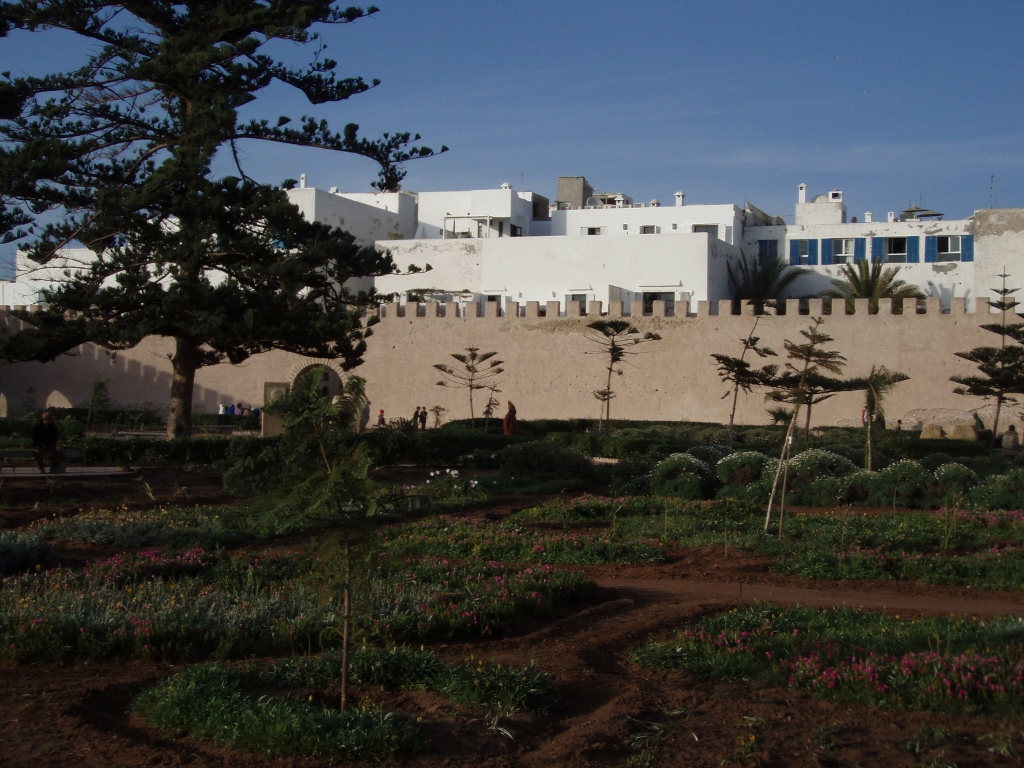 Essaouira, a detail
Essaouira, a detail
Having re-entered the Medina in Essaouira, I simply continued to stroll casually and take photos from time to time.
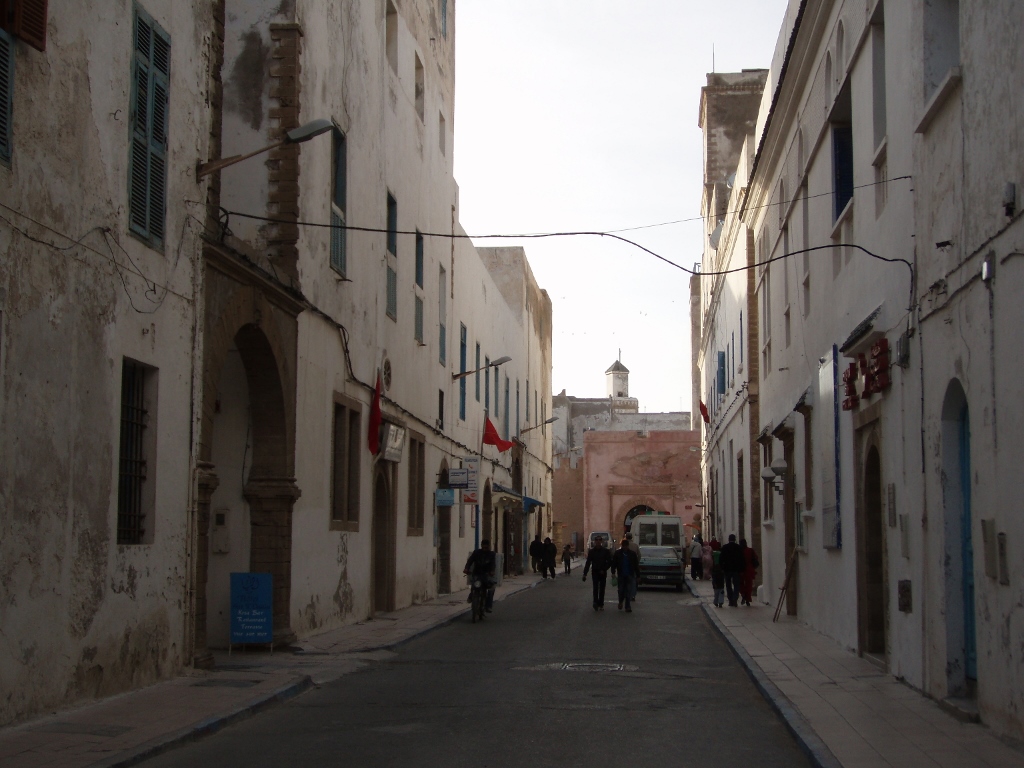 Essaouira, a detail
Essaouira, a detail
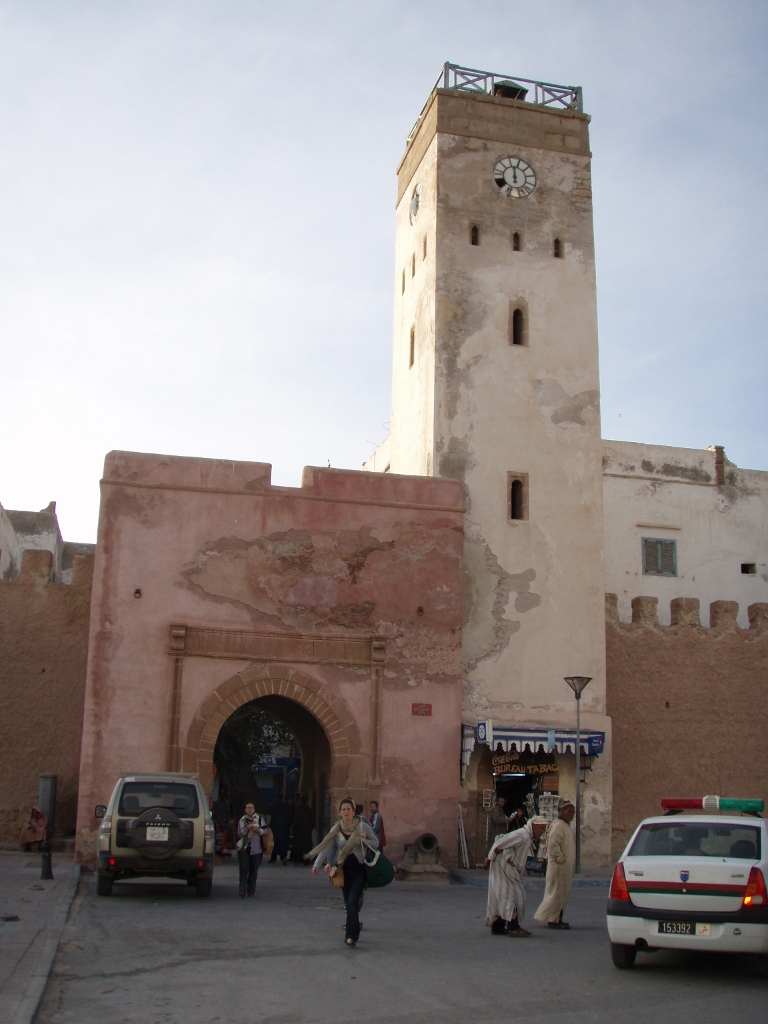 Essaouira, a detail
Essaouira, a detail
That’s how I came to the main street through which I had entered Essaouira earlier, when I was heading to the hotel with the “cart taxi driver.” Now I could more calmly photograph the street and interesting details like people or the arches along the street (visible through the middle arch on the right side of the next photo).
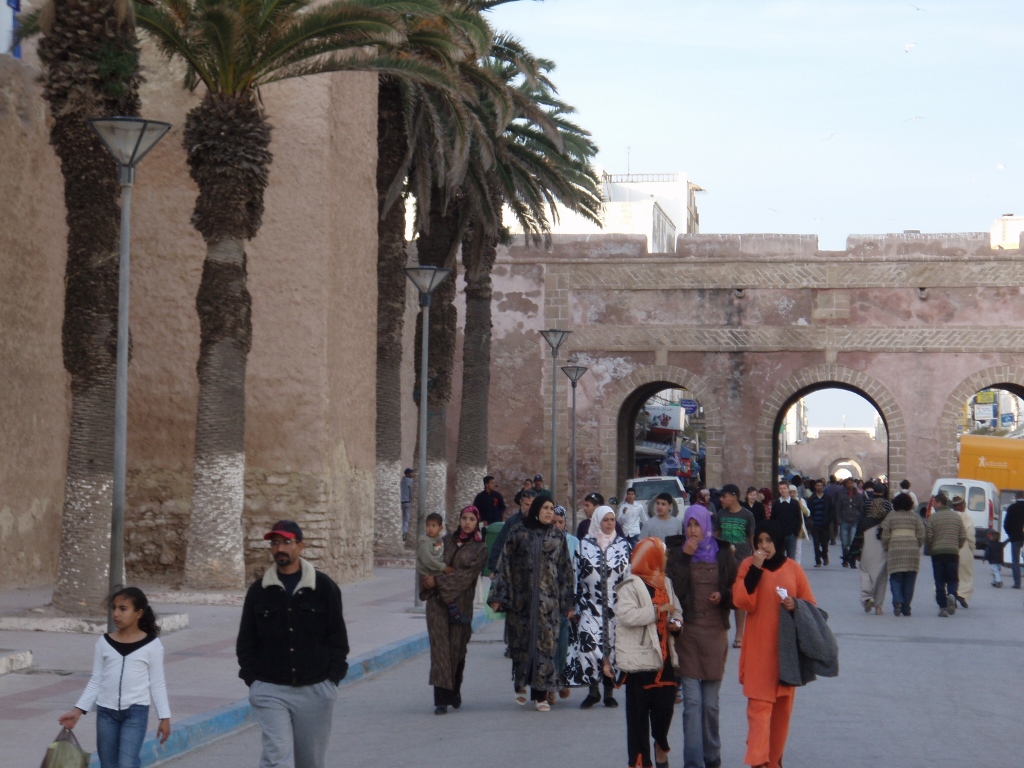 Essaouira, a detail
Essaouira, a detail
Since my intention now was to reach the walls of Essaouira, I slipped into the narrow streets of the medina from here and I have to admit it felt quite pleasant – there was no strong wind, while the sights were beautiful.
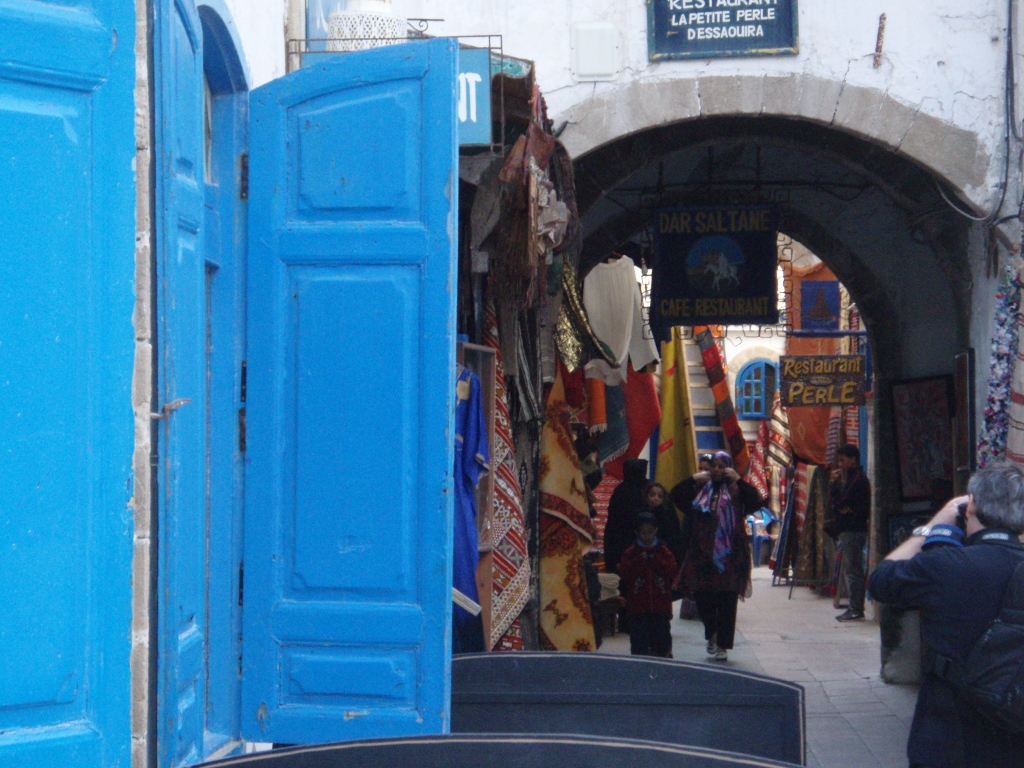 Essaouira, a detail
Essaouira, a detail
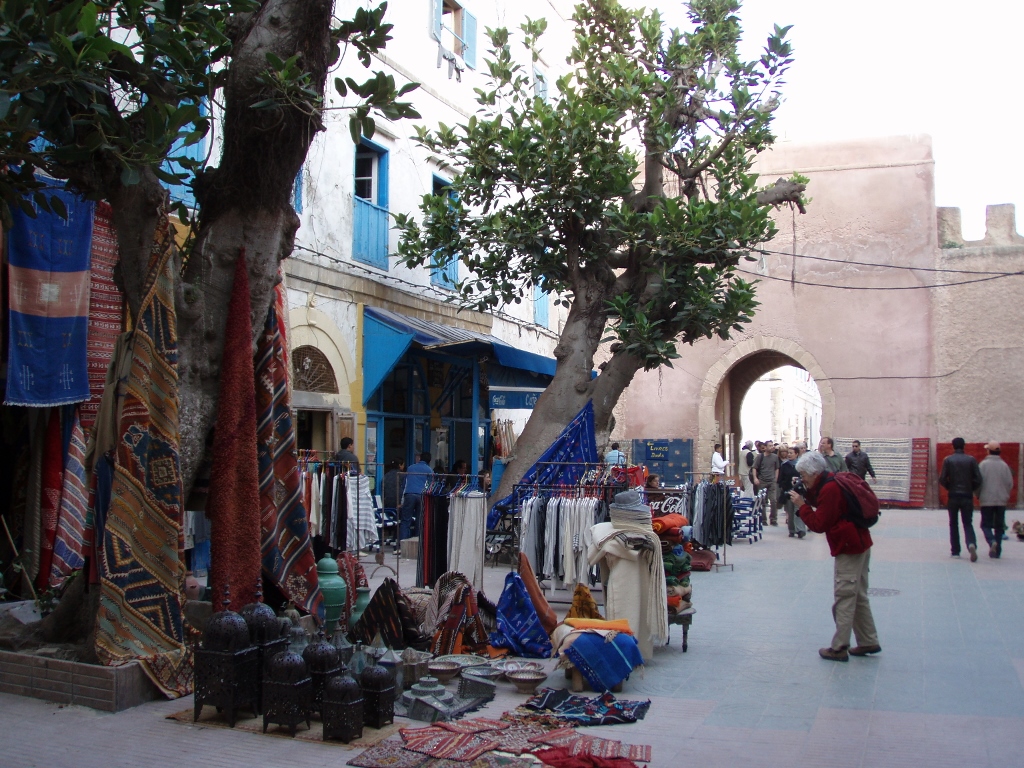 Essaouira, a detail
Essaouira, a detail
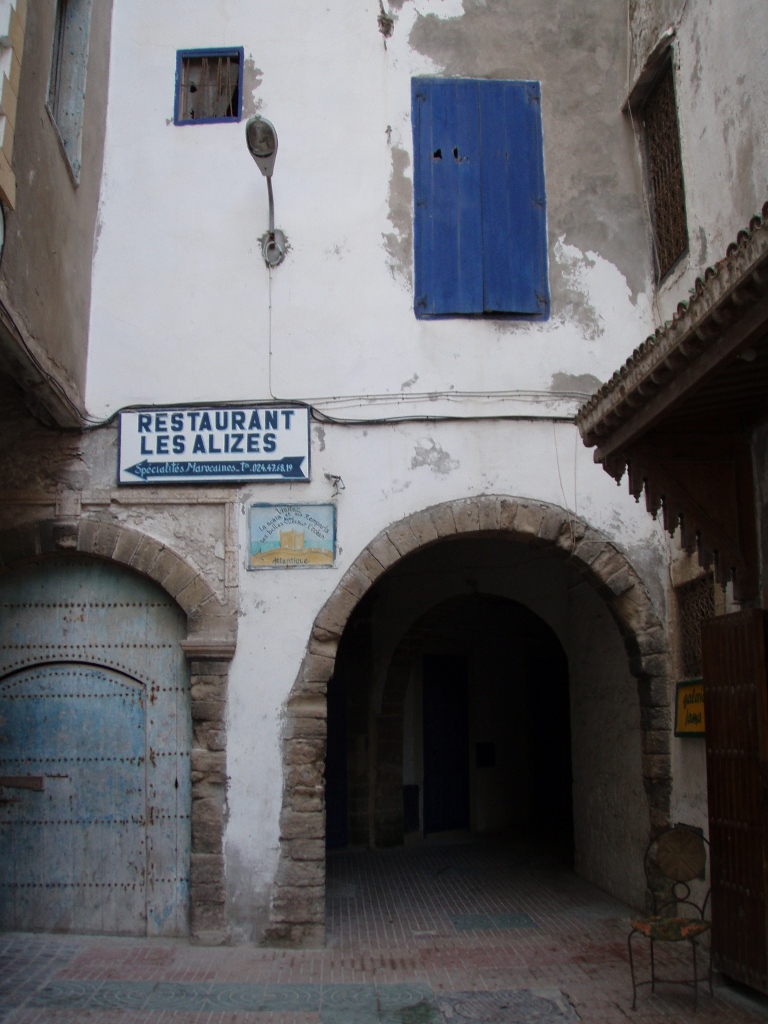 Essaouira, a detail
Essaouira, a detail
 Essaouira, a detail
Essaouira, a detail
I have already mentioned that the medina, or the old town of Essaouira, is considered significant on an international level because it represents an excellent example of a fortified town in this part of the world from the second half of the 18th century, combining influences from the Portuguese, the French, and the Berbers. On the other hand, the earlier name of Essaouira, Mogador, comes from the Phoenician word “migdol,” meaning “small fortress.” This clearly indicates that some kind of fortification existed here much earlier.
However, the fortifications that surround the old town and can still be seen today were primarily built under the influence of the Vauban model. By the way, Vauban (1633–1707) was a renowned French military engineer whom I had already mentioned in: https://www.svudapodji.com/en/fgs-12/.
Today, part of the fortifications is also used for shops selling goods primarily intended for tourists, that is, foreign visitors.
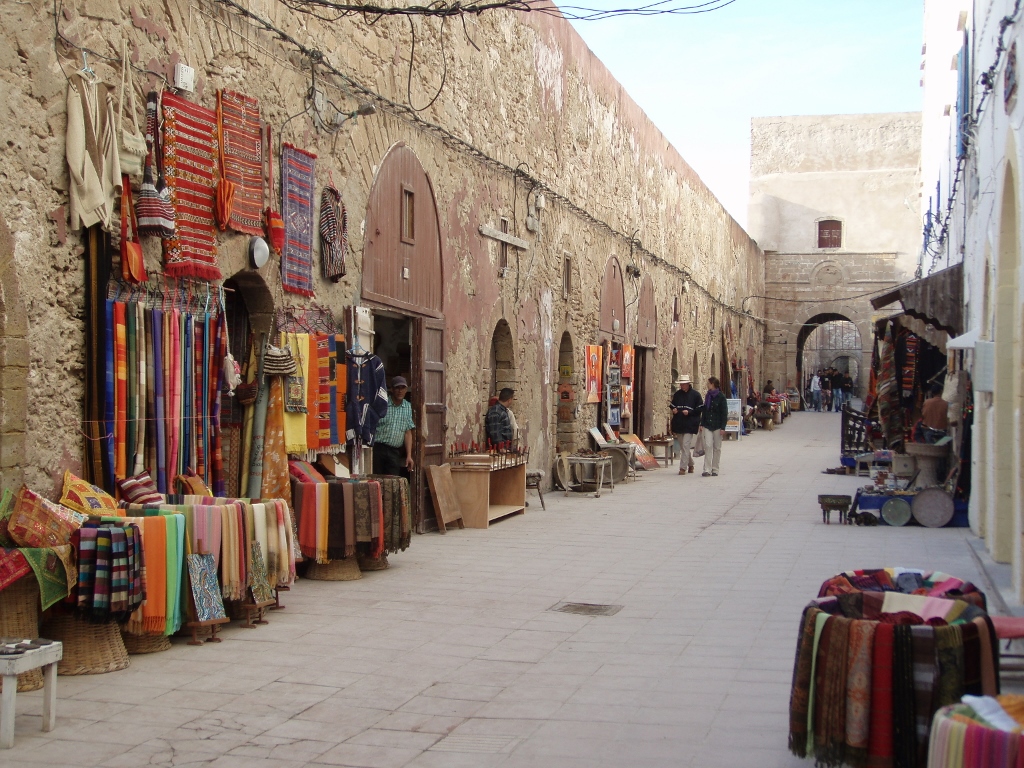 Essaouira, a detail
Essaouira, a detail
But once you pass through here, one of the options is to climb up onto the walls via a ramp.
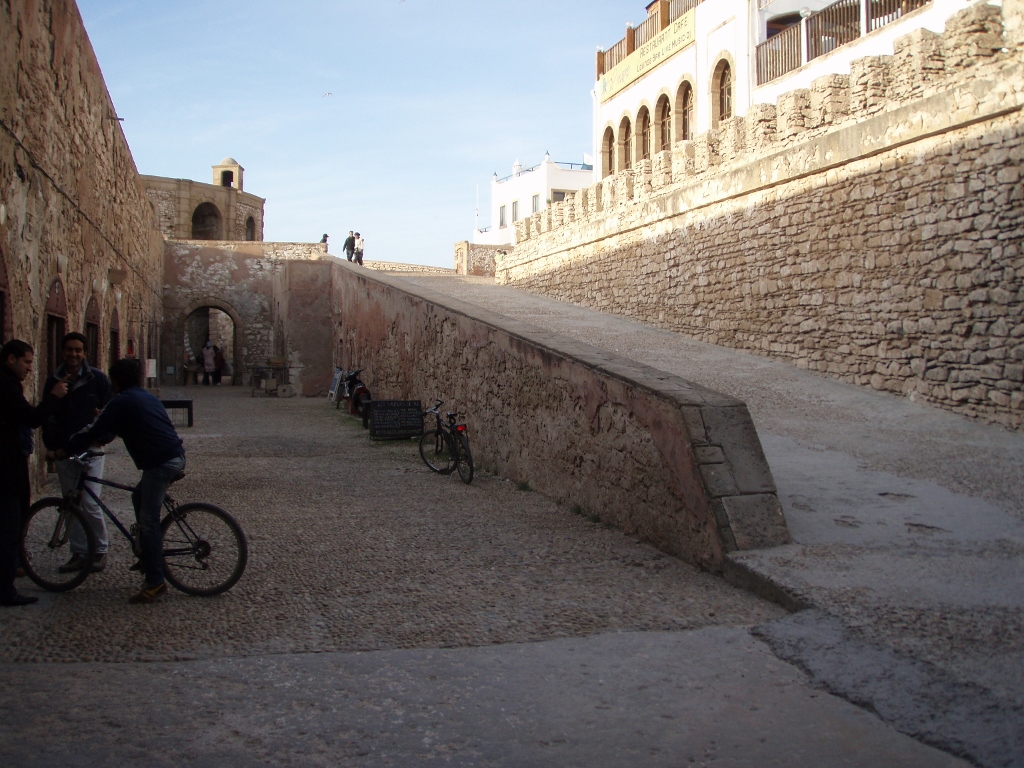 Essaouira, a detail
Essaouira, a detail
This entire area is so picturesque and striking that some very famous films and series were shot here. I already mentioned Orson Welles, who filmed his Othello in Essaouira. The ramparts are especially interesting and the film even opens with shots of them. Additionally, some scenes from the series Game of Thrones were also filmed here.
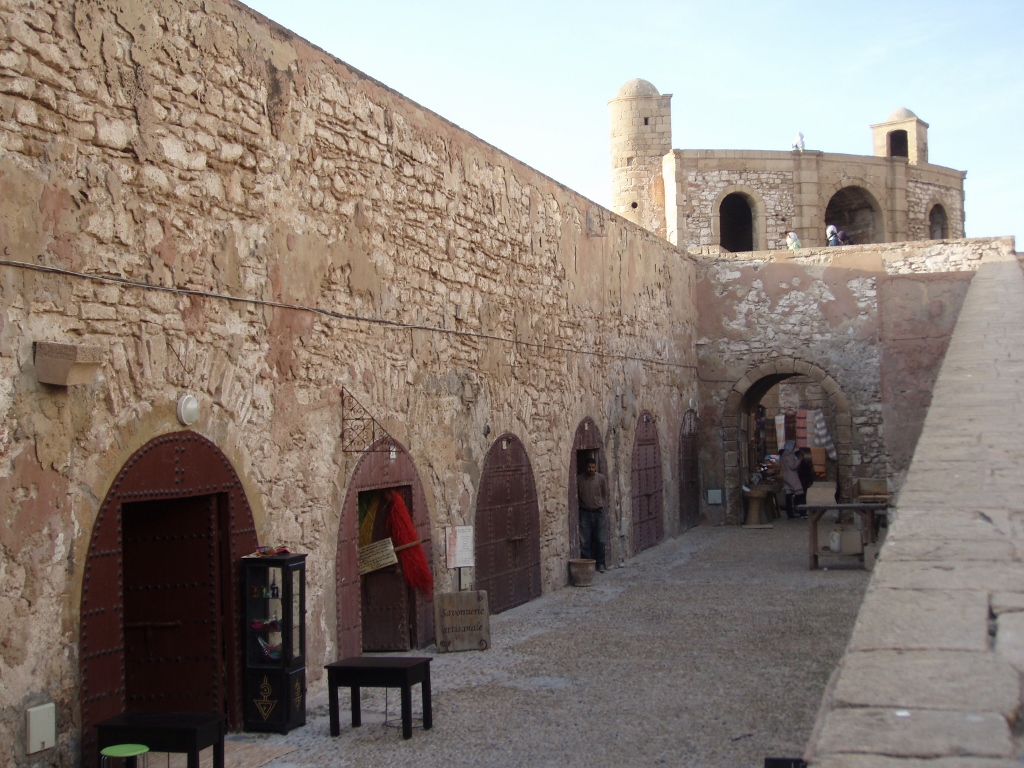 Essaouira, a detail
Essaouira, a detail
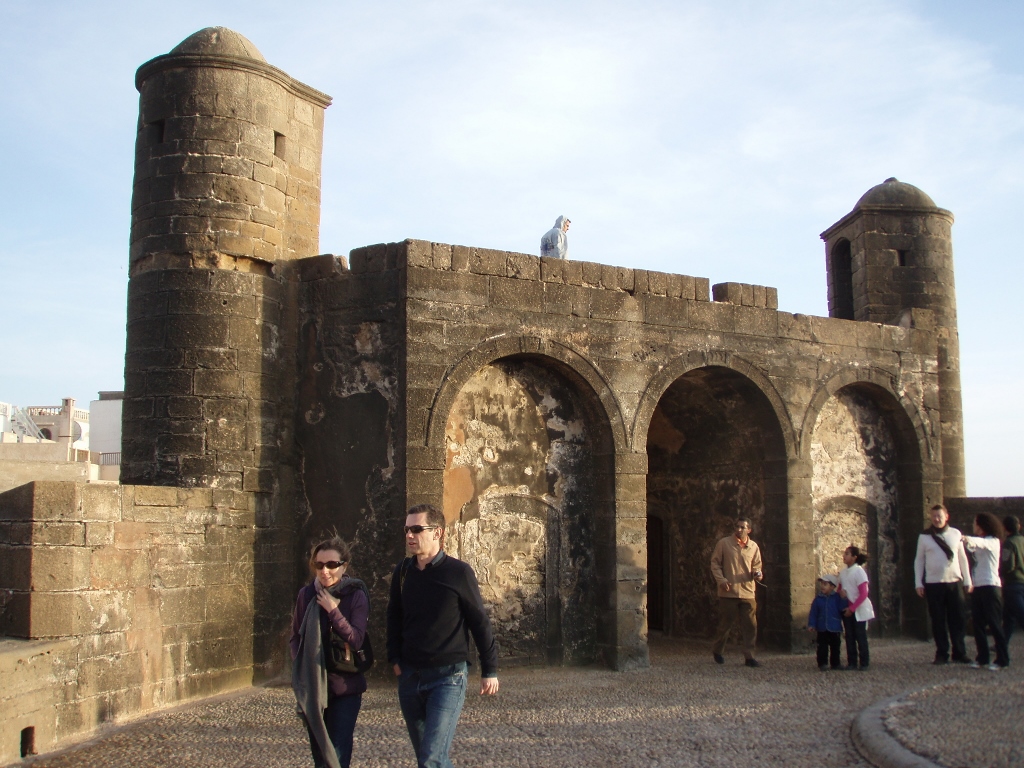 Essaouira, a detail
Essaouira, a detail
What was particularly striking during my visit, however, was the wind. The temperature wasn’t very low, but an exceptionally strong wind was blowing. Luckily, I was wearing a special jacket designed specifically to protect against wind. Although I had wondered several times during my trip through Morocco why I had brought it with me, on this occasion it completely justified its presence in my life and luggage. It protected me extremely well.
Besides that, it was also good that I had a headscarf, because otherwise my hair would have become a complete mess. On the other hand, I had to wipe my glasses several times because a fine layer of salt formed on them. The wind carried almost imperceptibly tiny droplets of seawater and if I hadn’t been wearing glasses, I probably wouldn’t even have been aware that there was so much salt in the air.
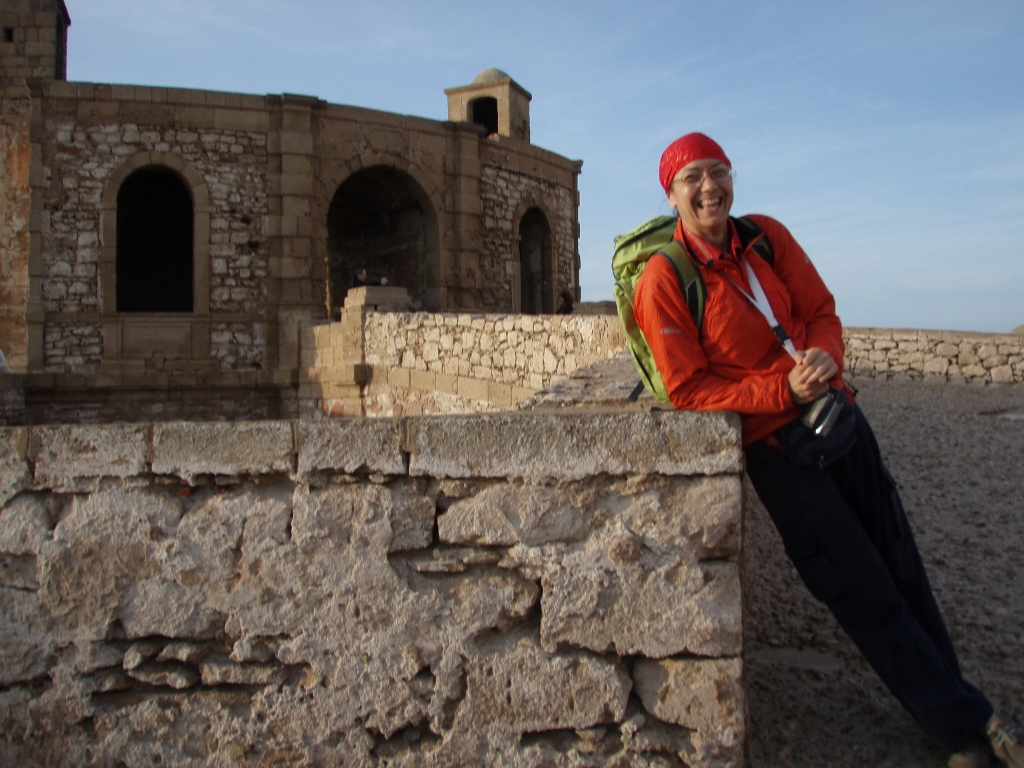 Me in Essaouira
Me in Essaouira
But it is precisely the wind, which often blows and is usually very strong, that is one of the things this city is known for. Given the regular strong winds, the entire coastline around Essaouira is famous as a centre for kitesurfing and windsurfing.
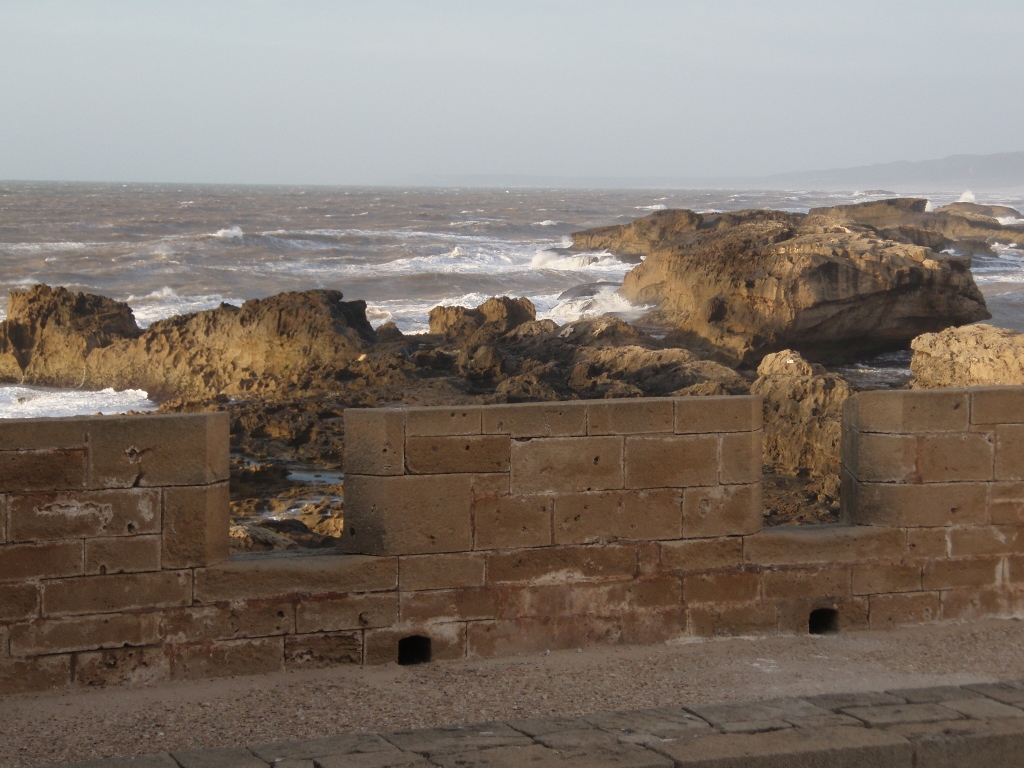 Essaouira, a detail
Essaouira, a detail
Of course, the strong wind was blowing on this day as well and although I didn’t see anyone sailing on the sea, I could easily understand the popularity of this place in that context.
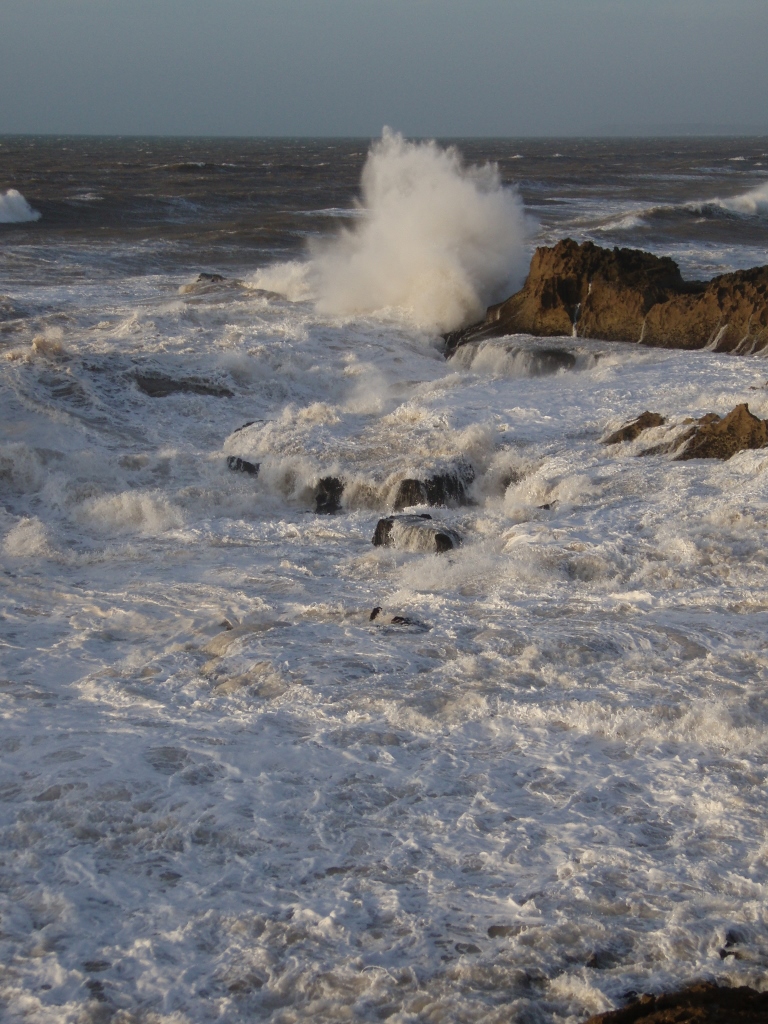 Essaouira, a detail
Essaouira, a detail
On the ramparts, there are also antique cannons neatly arranged, while a bit further I could see the bastion Sqala of the Port, as well as Mogador Island and the Small Island.
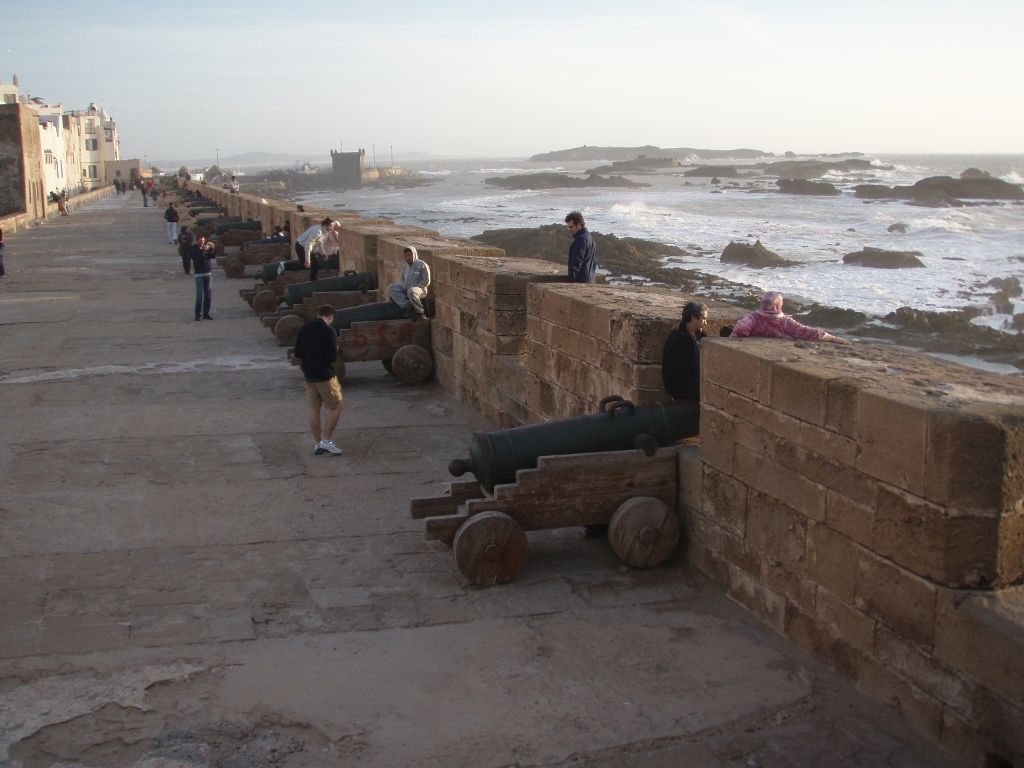 Essaouira, a detail
Essaouira, a detail
Still, I came here at this time to get a good view of the sunset behind the turbulent waters of the Atlantic Ocean.
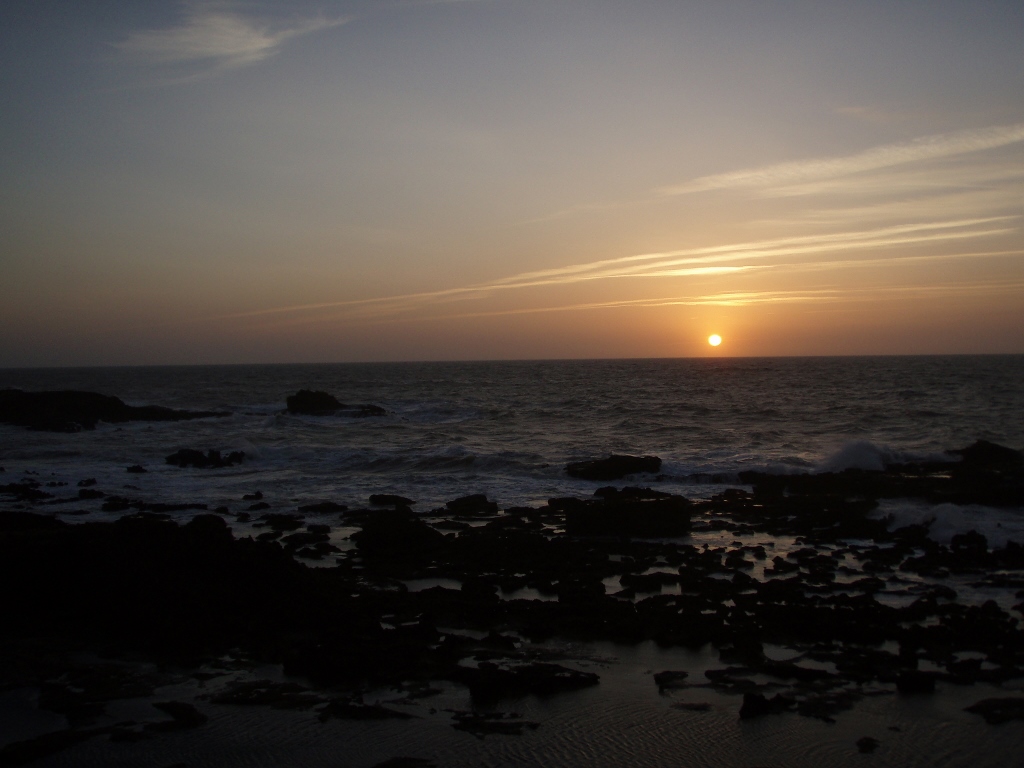 Essaouira, a detail
Essaouira, a detail
Afterwards, I went for a simple dinner, thus ending the day. The photos of the food didn’t turn out very well (the lighting was poor and they’re somewhat blurry), but they still nicely illustrate what I ate, while everything was very tasty.
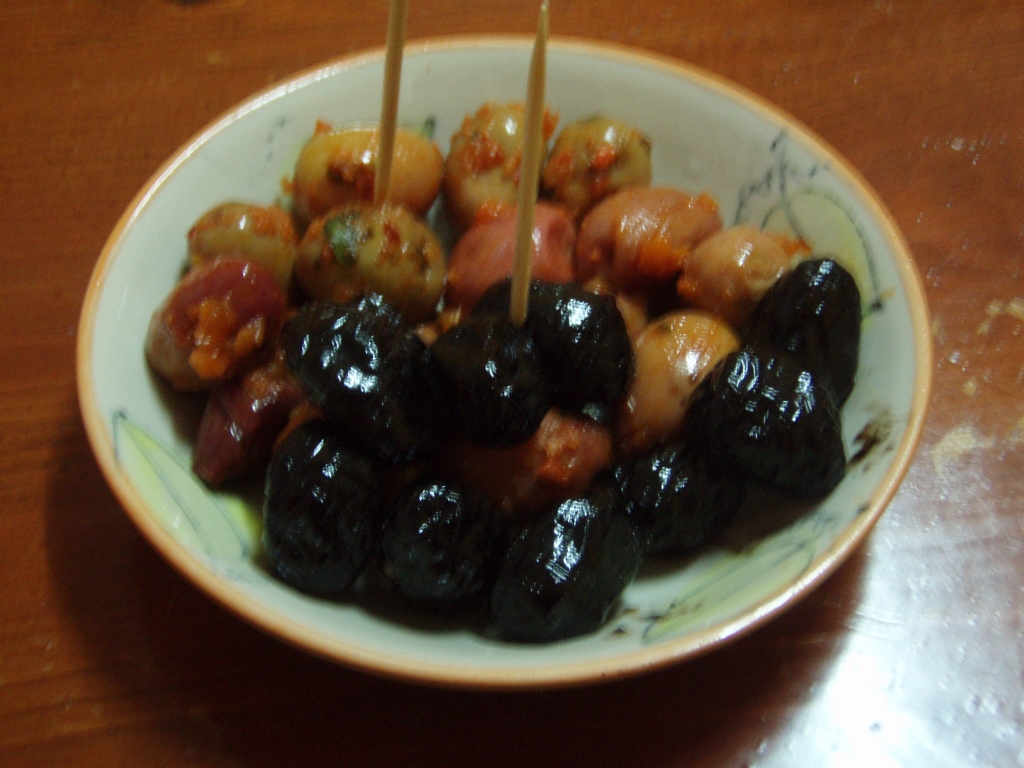 Part of the dinner in Essaouira
Part of the dinner in Essaouira
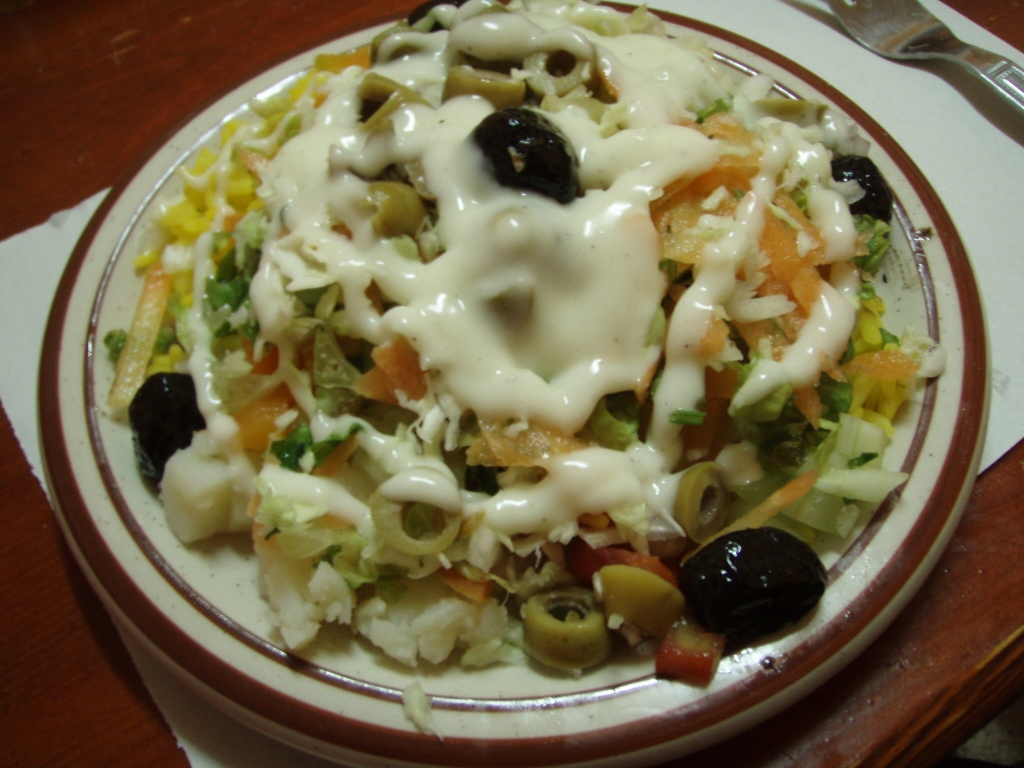 Part of the dinner in Essaouira
Part of the dinner in Essaouira
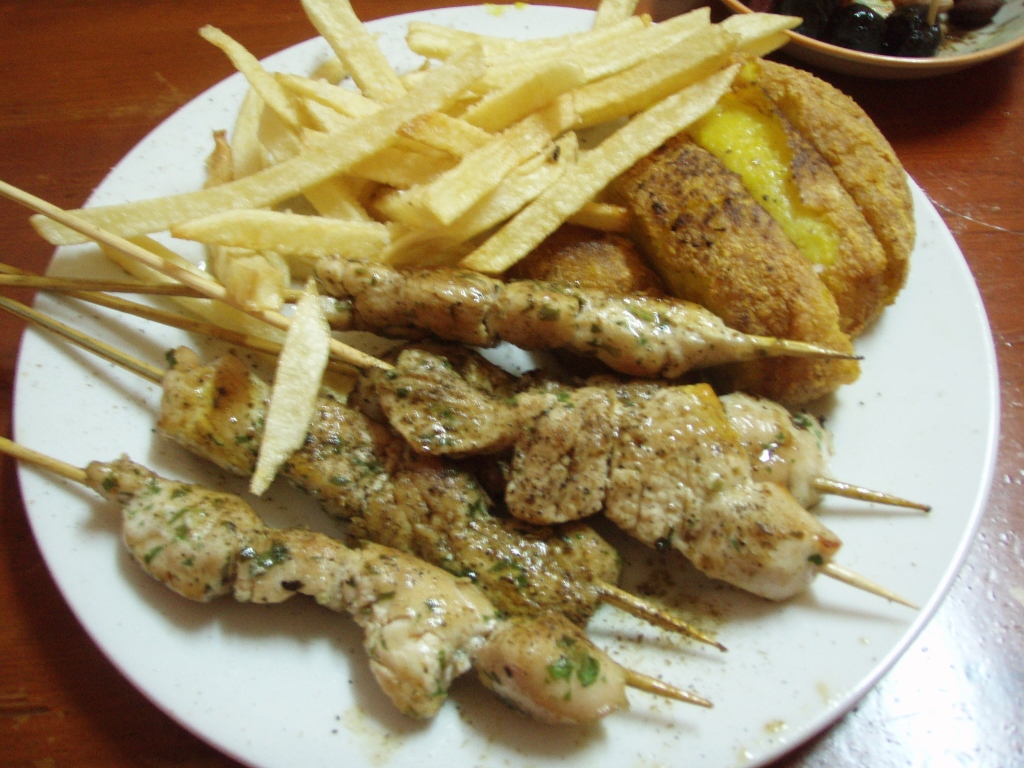 Part of the dinner in Essaouira
Part of the dinner in Essaouira
The next morning, I deliberately woke up early because I wanted to walk to the walls when there weren’t many people around and the sun was just rising. Still, to start with, I took a photo of the view from the terrace of my hotel room, where I was greeted by the wonderful scents of freshly baked pastries. Unfortunately, that can’t be captured in a photo, only imagined. Everything also seemed quite calm, meaning there were no people on the street and the strong wind from the previous evening wasn’t blowing, but the morning greetings of local roosters could be heard.
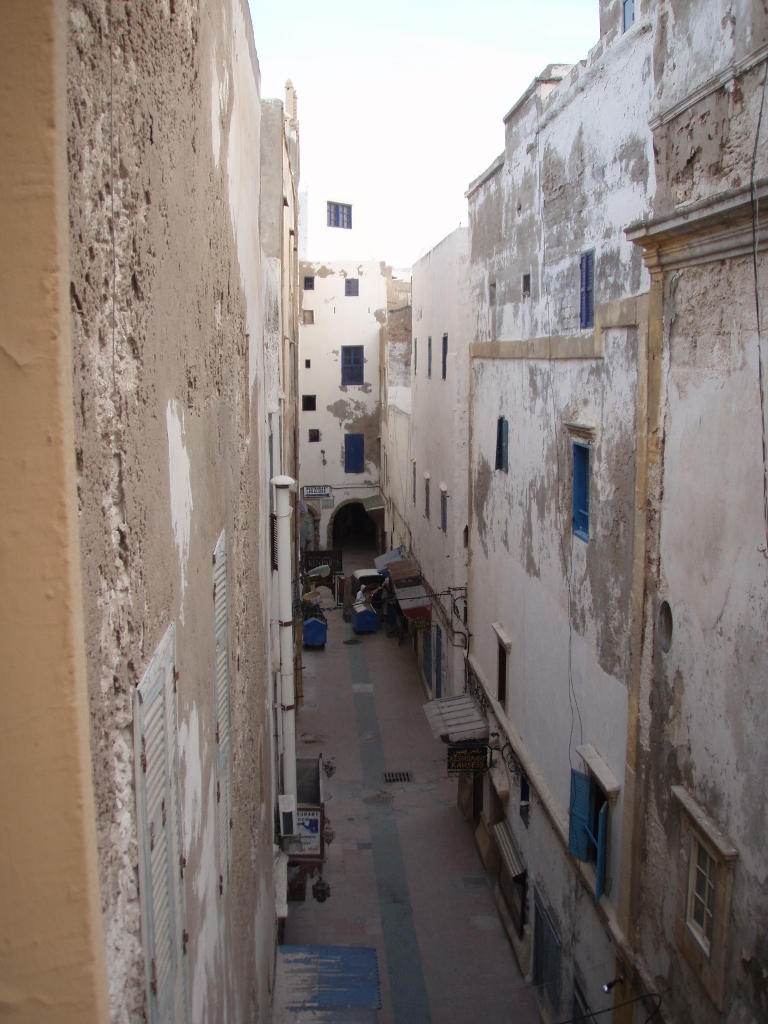 Essaouira, a detail
Essaouira, a detail
I got dressed and climbed back up to the rooftop terrace of the hotel, where I took a photo of a picturesque nearby building.
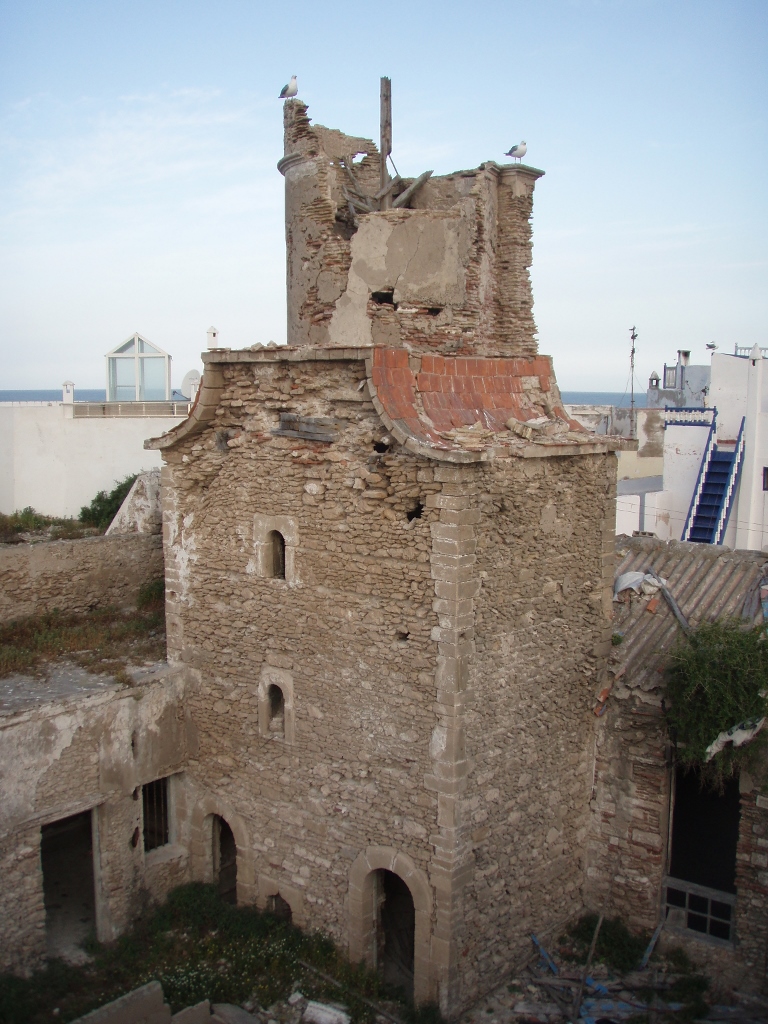 Essaouira, a detail
Essaouira, a detail
Soon I was walking the streets of the Medina in Essaouira and even on the ramparts. However, by the time I got there, I realised that the impression that the wind wasn’t blowing had been just an illusion, or a momentary calm, or perhaps because my hotel was on a narrow street where the wind didn’t quite reach. My windbreaker jacket once again played its excellent role, although it was also chilly since it was early morning.
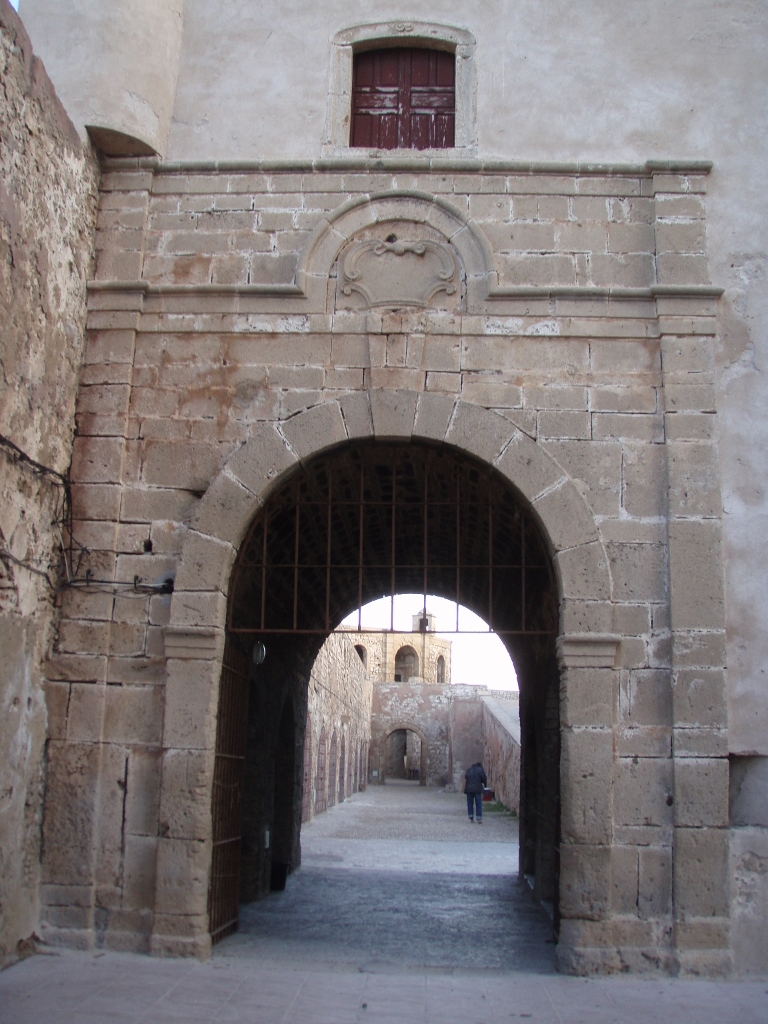 Essaouira, a detail
Essaouira, a detail
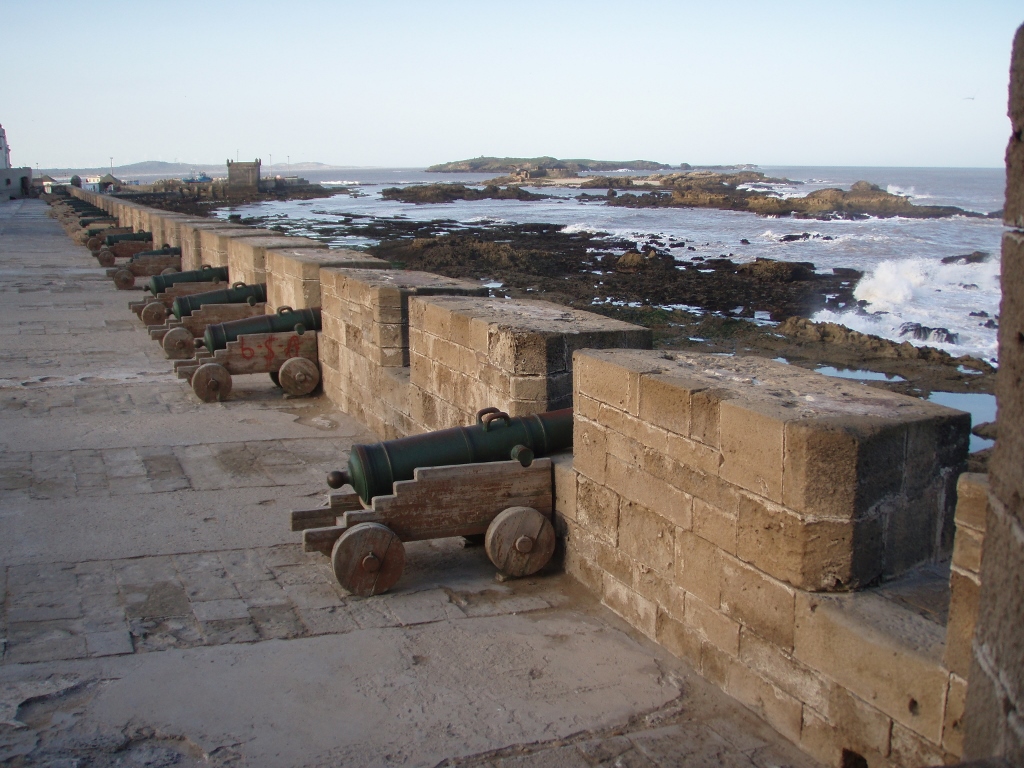 Essaouira, a detail
Essaouira, a detail
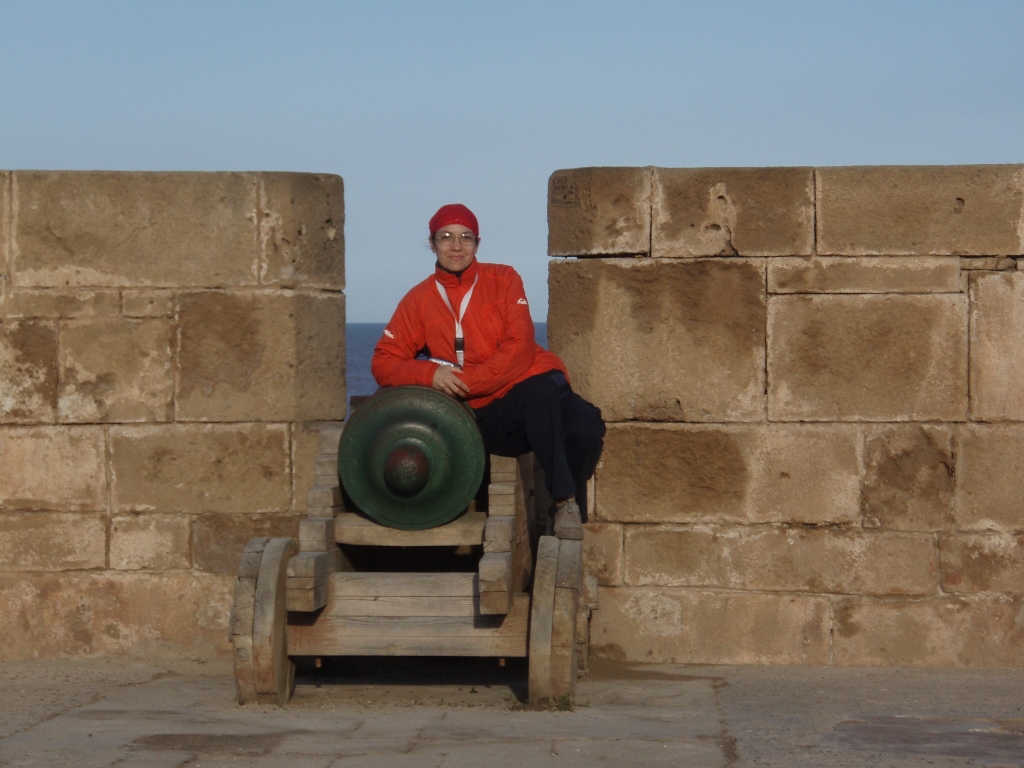 At the ramparts of Essaouira
At the ramparts of Essaouira
Now I could see a bit more clearly the islands located opposite Essaouira, which I had already mentioned. The larger island is called Mogador and its position protects the bay near Essaouira, making it a good place to establish the port. On the island, remnants of a 19th-century prison can be seen. The other, Small Island, contains the remains of a former Portuguese fortress.
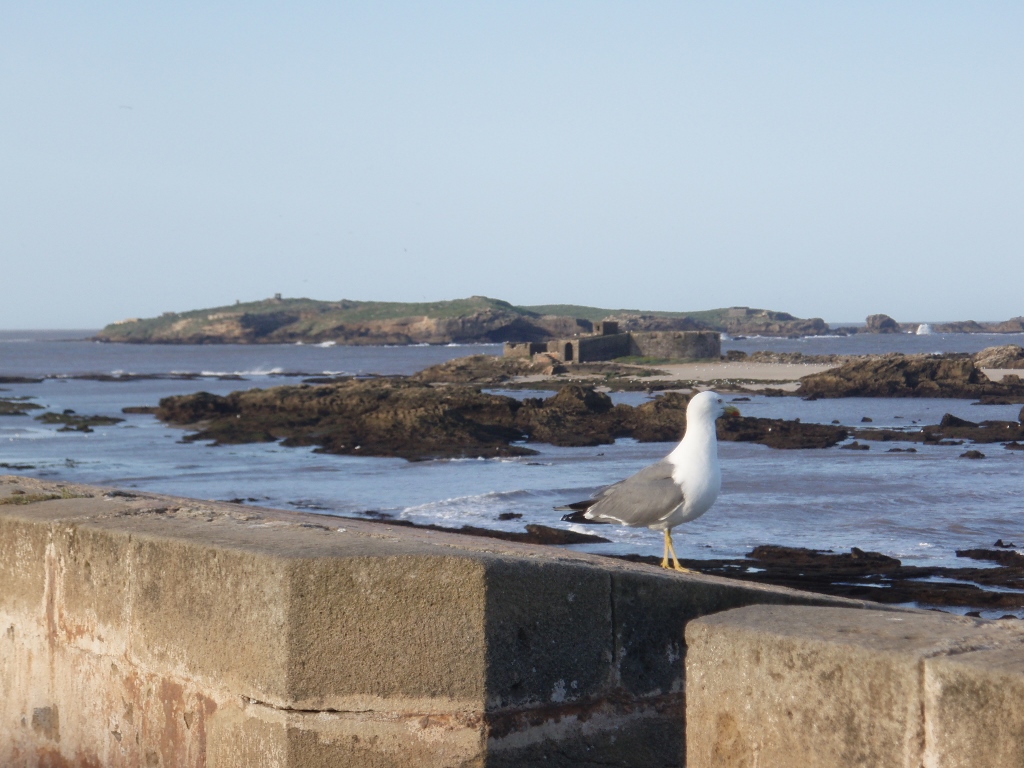 Essaouira, a detail
Essaouira, a detail
Although I enjoyed the view from the walls of Essaouira where I walked around a bit, I felt much more comfortable when I slipped back into the medina’s streets, as there was less wind and it was less cold. On the other hand, I now paid more attention to the beautifully picturesque details of the old town, which was still “asleep” since it wasn’t even 8 a.m. yet.
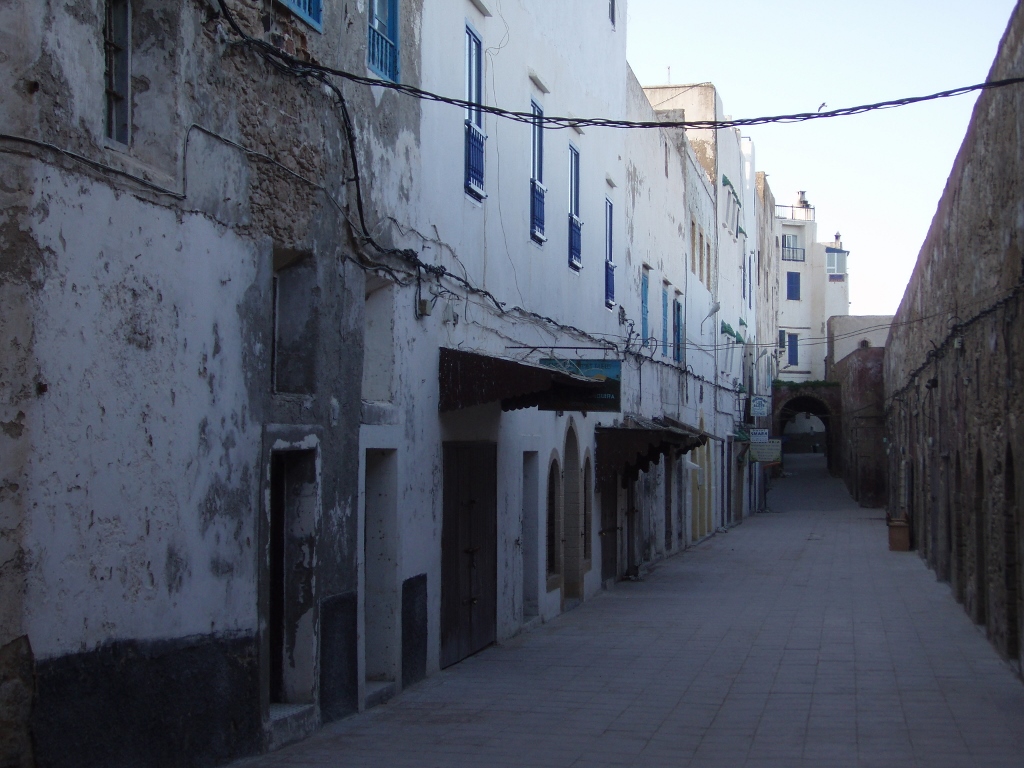 Essaouira, a detail
Essaouira, a detail
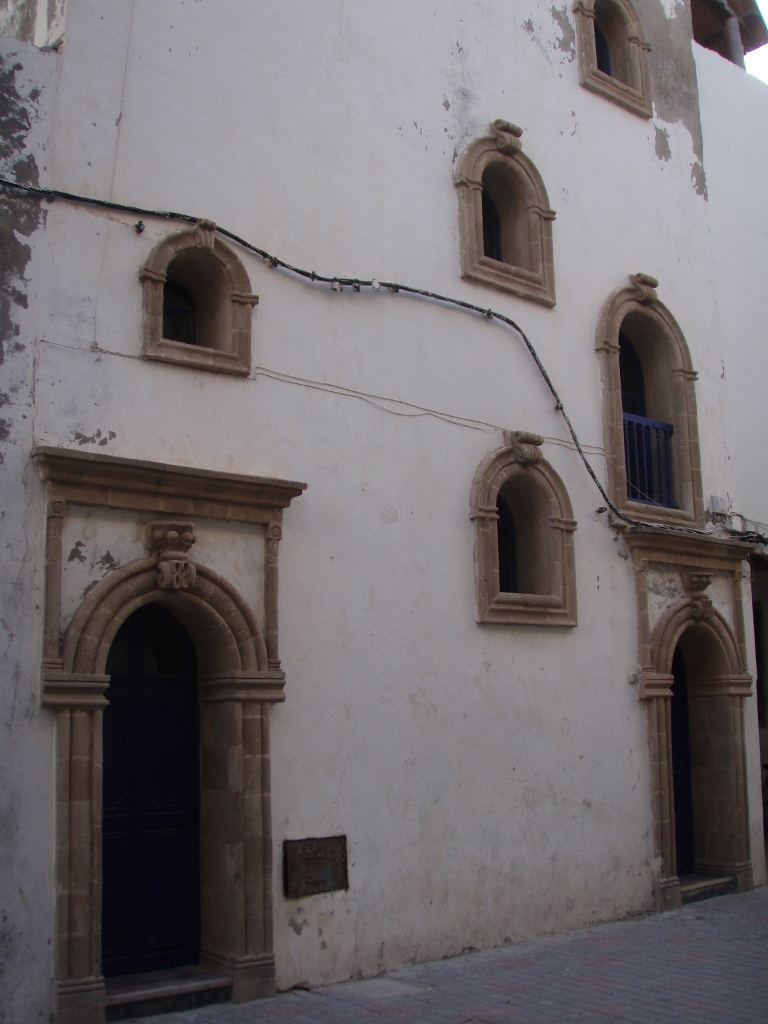 Essaouira, a detail
Essaouira, a detail
Until now, I have mostly mentioned the walls of the Medina in Essaouira, but this cultural site is listed on UNESCO’s World Heritage List not only as an example of military architecture but also as an example of a multicultural centre, a place where different ethnic and religious groups have lived since its founding. By the way, the cultural property of the Medina in Essaouira also includes the Purpuraires Islands (Îles Purpuraires) or the Mogador Archipelago, which features important cultural and natural sites on the previously mentioned islands.
The Medina in Essaouira was founded relatively late (in the second half of the 18th century) as an expression of the desire for it to be a royal port and the main commercial centre of Morocco open to the outside world, which was indeed the case not only at the end of the 18th century but throughout the entire 19th century.
Although it is not large, I greatly enjoyed walking here, especially admiring the various doorways I noticed.
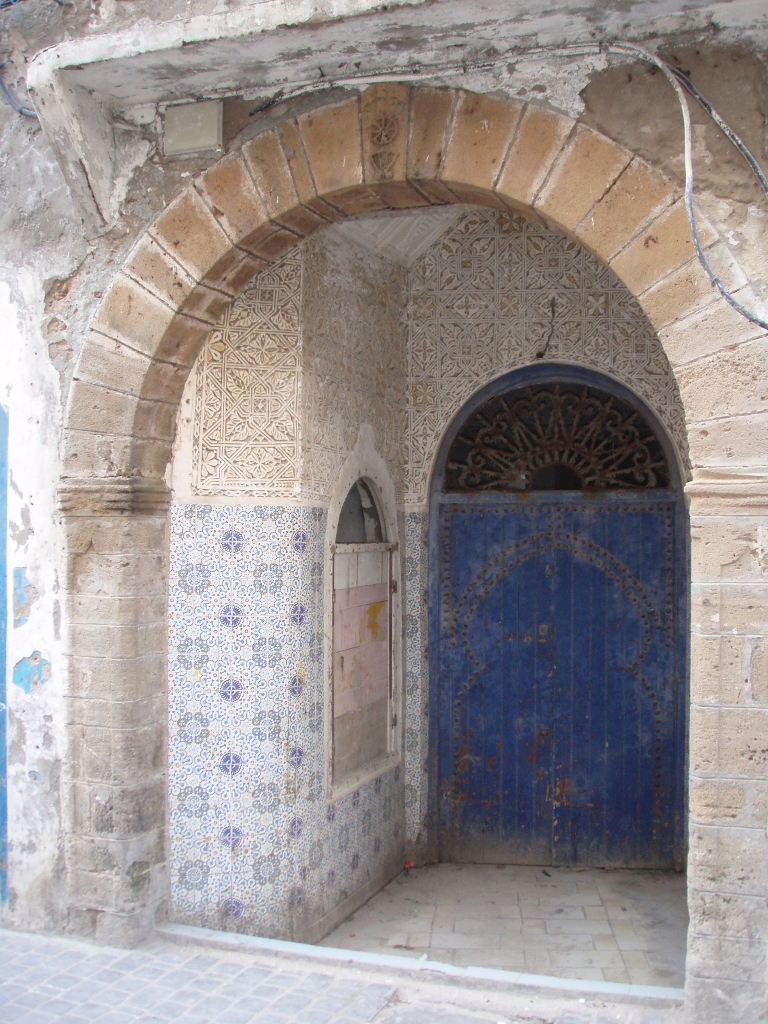 Essaouira, a detail
Essaouira, a detail
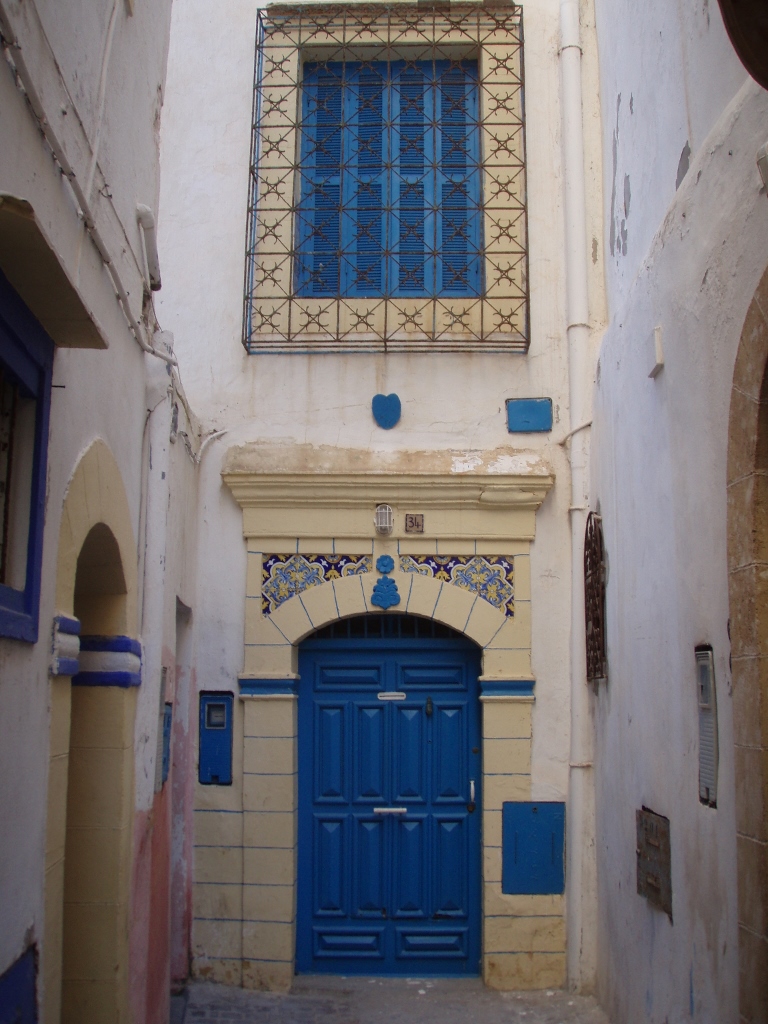 Essaouira, a detail
Essaouira, a detail
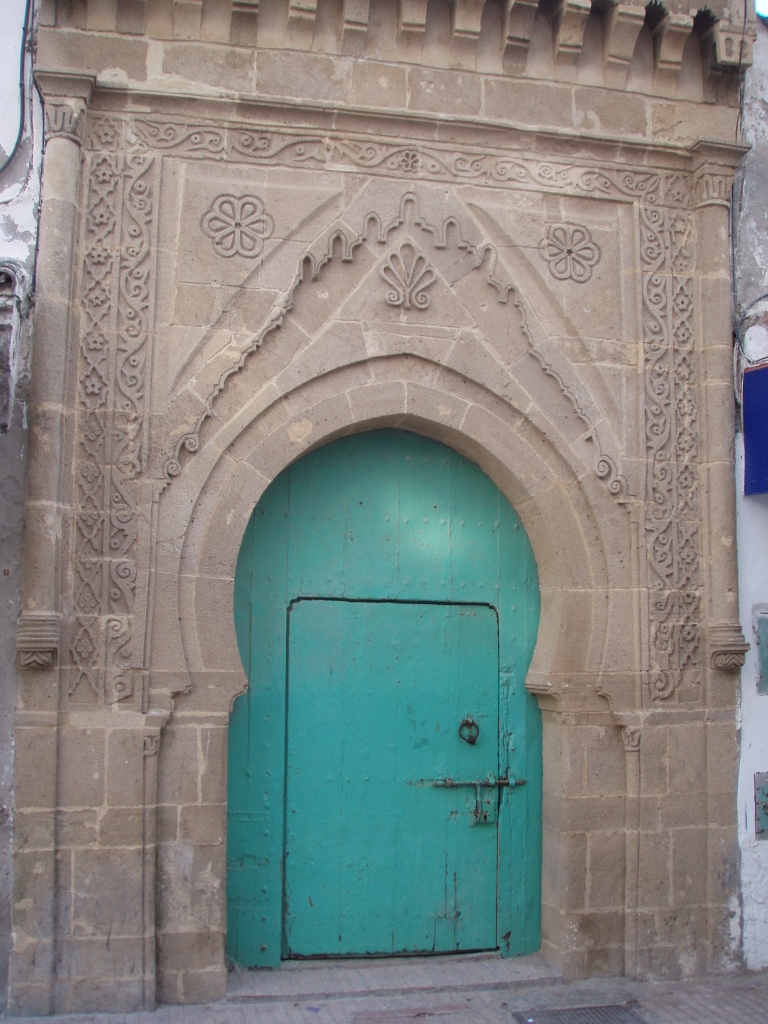 Essaouira, a detail
Essaouira, a detail
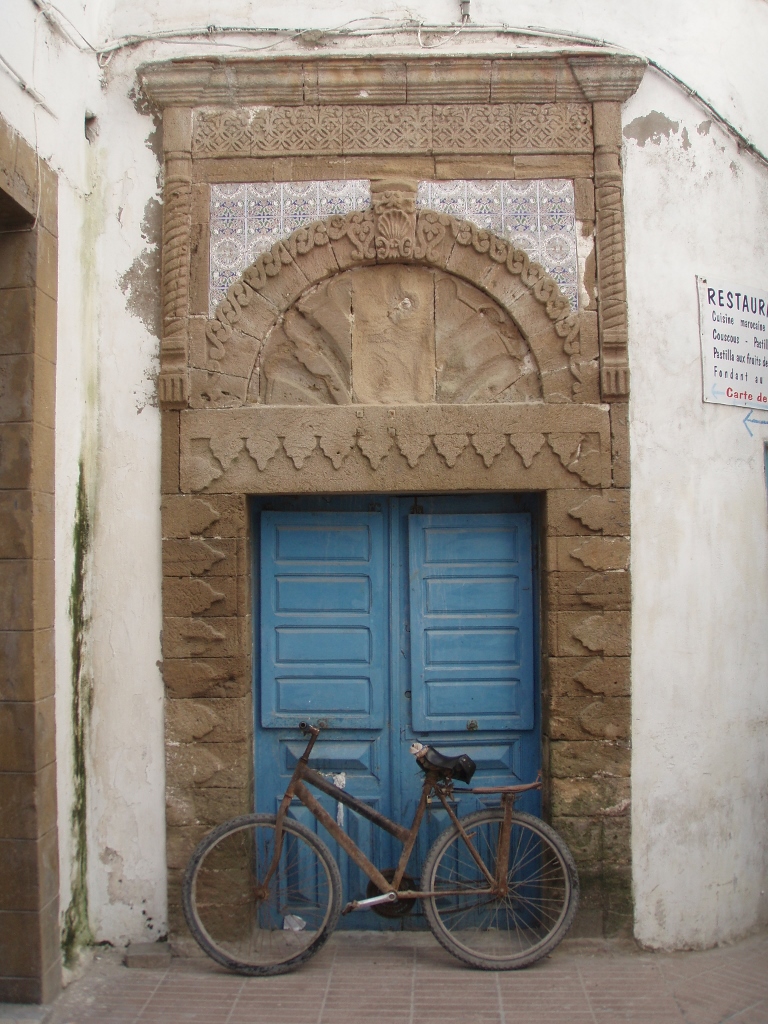 Essaouira, a detail
Essaouira, a detail
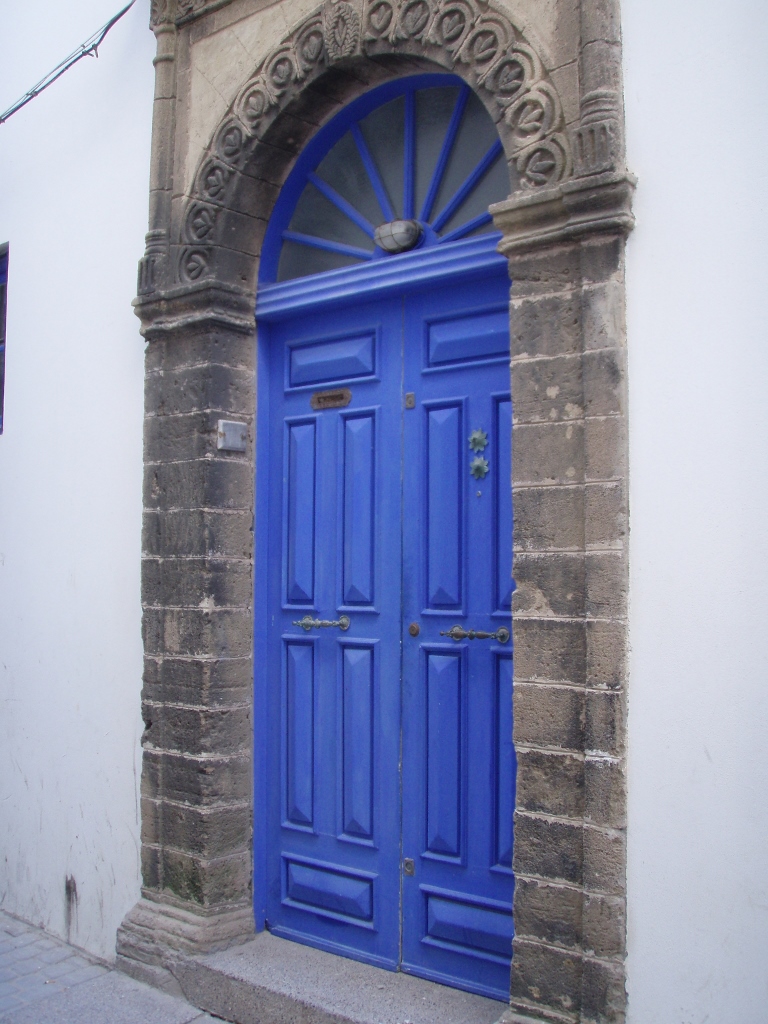 Essaouira, a detail
Essaouira, a detail
I passed by some of the more prominent parts I had seen, then returned to the hotel to finish packing and have breakfast.
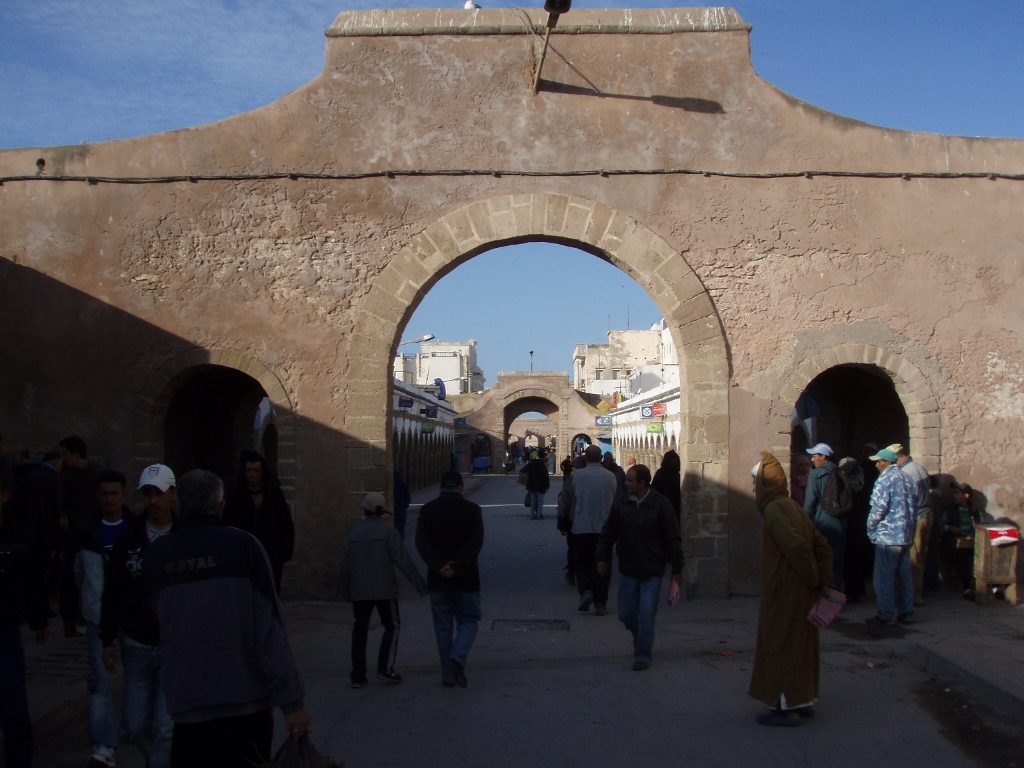 Essaouira, a detail
Essaouira, a detail
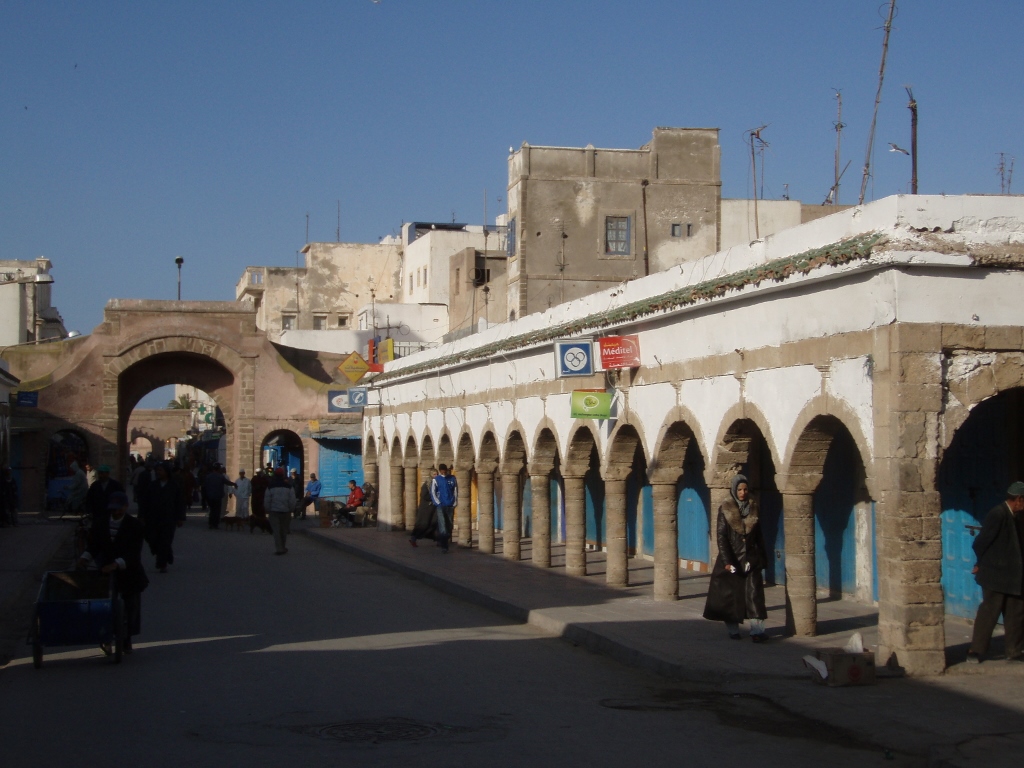 Essaouira, a detail
Essaouira, a detail
However, before returning to the hotel, as the shops started to open, I stopped at one to buy something very specific right there. It was – oil. Not just any oil, but argan oil, which is traditionally produced in the area around Essaouira.
This oil is extracted from the seeds of the Argania spinosa tree, which is endemic and grows only in Morocco and south-western Algeria. Traditionally, the oil is used in cooking as a substitute for olive oil, but since the early 21st century, it has also become quite popular in the cosmetics industry. So, it would have been a shame not to buy a bottle of argan oil right at its source.
Besides being interesting for oil production, the argan tree is very useful because its fruits can be eaten, while the tree itself can be used as firewood. The argan tree can grow up to 8 to 10 meters tall, and its crown is exceptionally wide, sometimes reaching a diameter of up to 70 meters.
What is especially popular among tourists are the goats that climb the argan trees. It’s said that this is the only type of tree goats climb and you can find various photos of this online. However, on one hand, this is harmful to the trees themselves, as the goats threaten the tree’s growth by browsing on the leaves and eating the fruits. Also, from what I’ve read, in nature, without human intervention, it is rather rare for goats to actually climb these trees. So it’s quite possible that local “entrepreneurial” tourism workers find ways to encourage goats to climb the often already bare branches. This ultimately makes for an interesting photo.
I didn’t go searching for argan trees or goats and was perfectly happy with the oil I bought here.
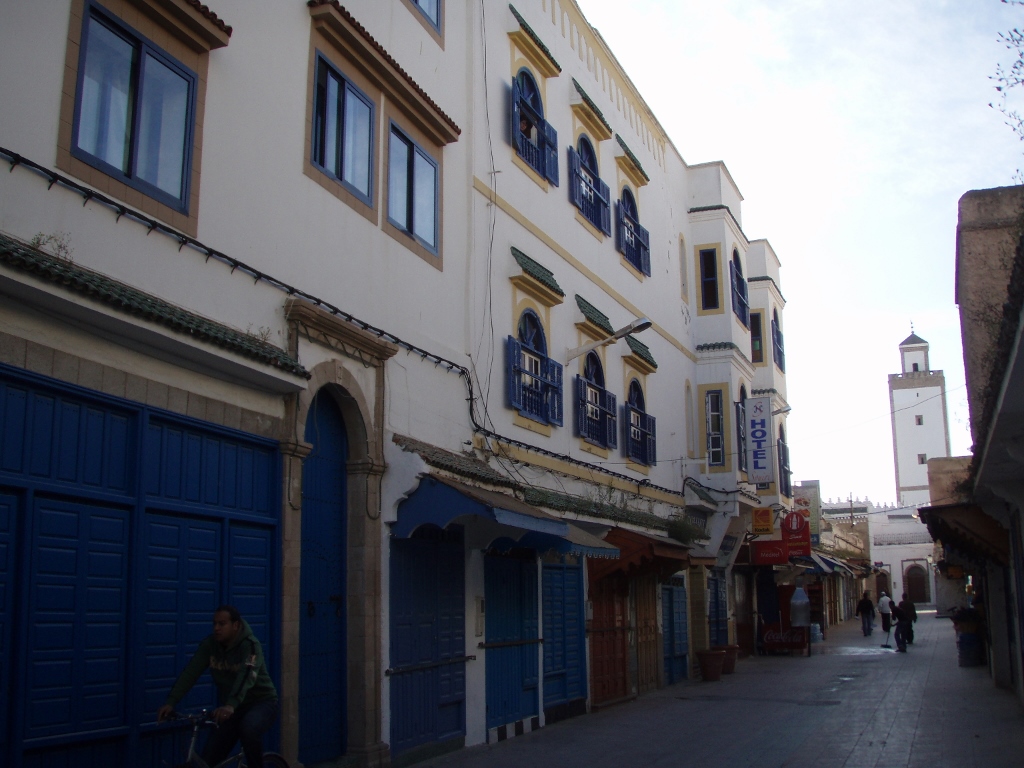 Essaouira, a detail
Essaouira, a detail
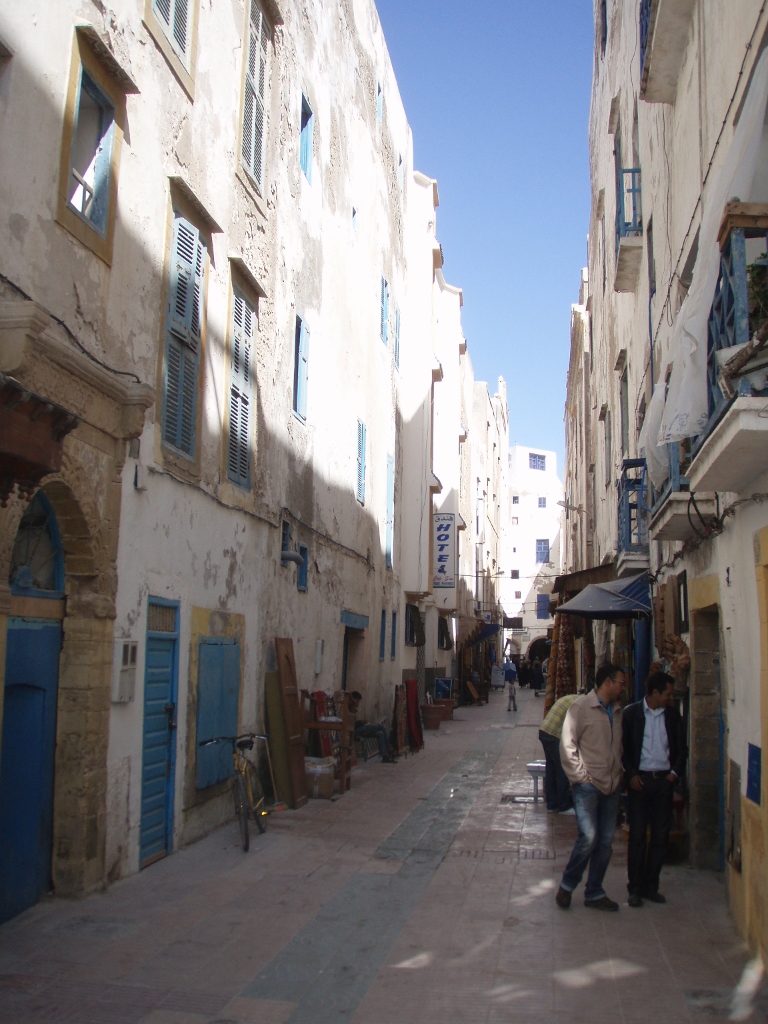 Essaouira, a detail
Essaouira, a detail
I have to admit, I liked everything about Essaouira. That includes the hotel itself, which I had to photograph once more before heading back out onto the street.
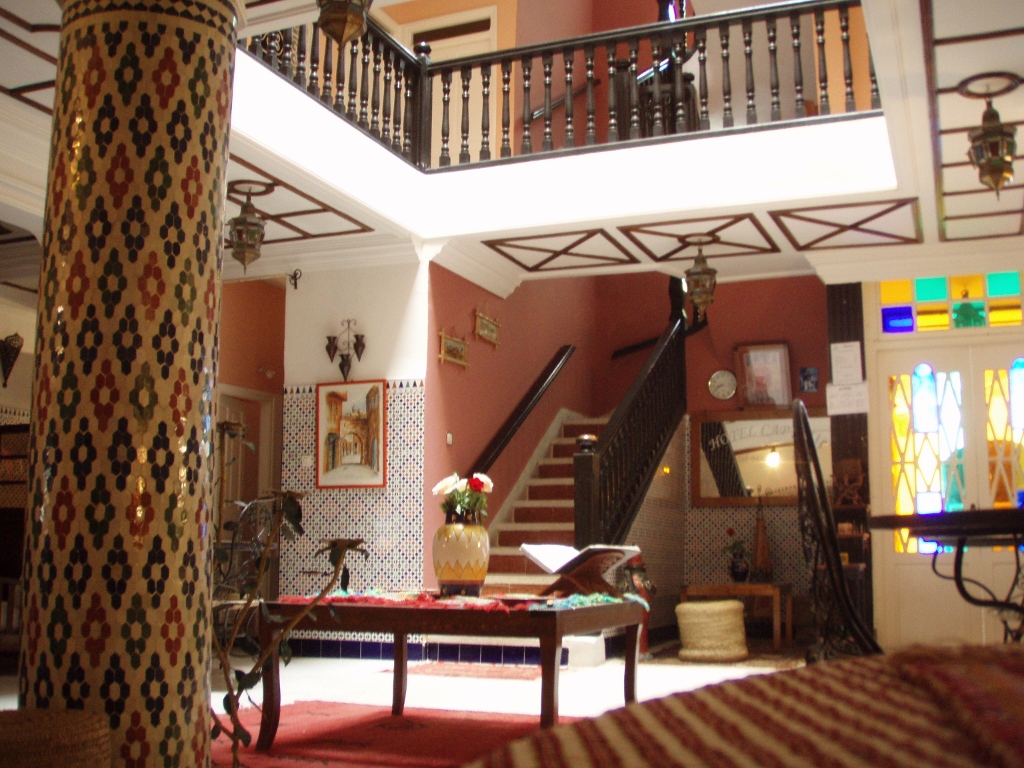 Essaouira, a detail
Essaouira, a detail
Now I first went for a walk with the intention of figuring out the "optimal route" to the taxi I knew I’d need later, and then I headed to a lovely café where I settled in comfortably and read. It was almost like a proper rest.
On the way back to the hotel, before finally leaving Essaouira, I took some more shots of details from this exceptionally beautiful and picturesque town.
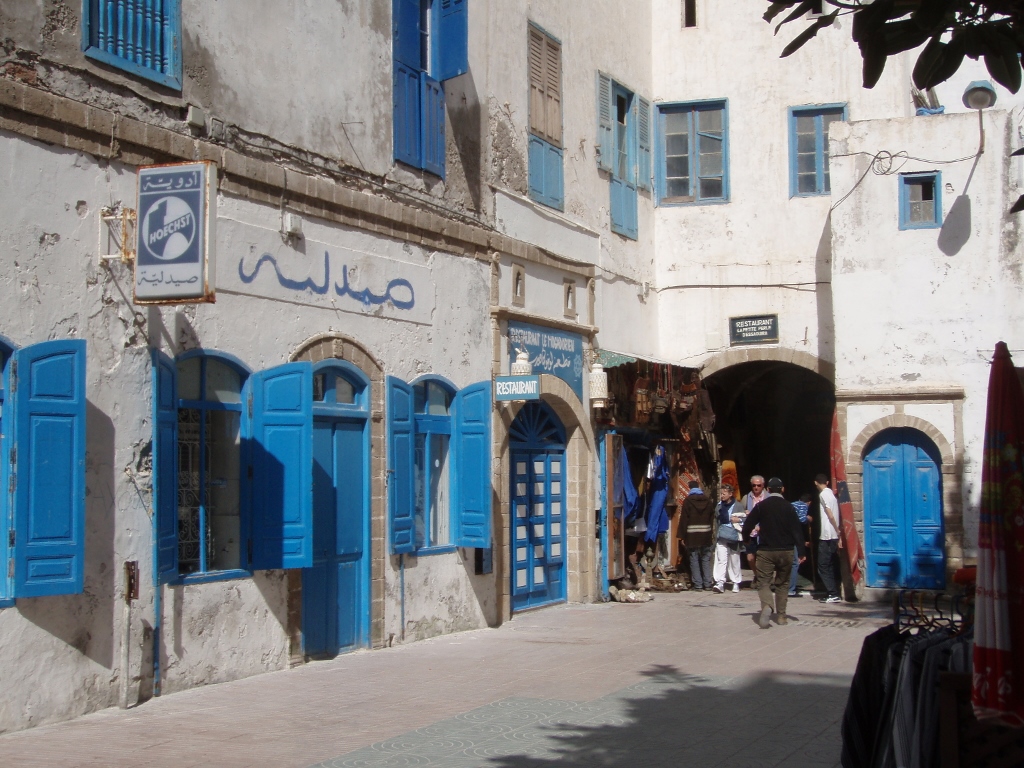 Essaouira, a detail
Essaouira, a detail
 Essaouira, a detail
Essaouira, a detail
A little later, I took a coach to the city of Safi, also located on the Atlantic coast.